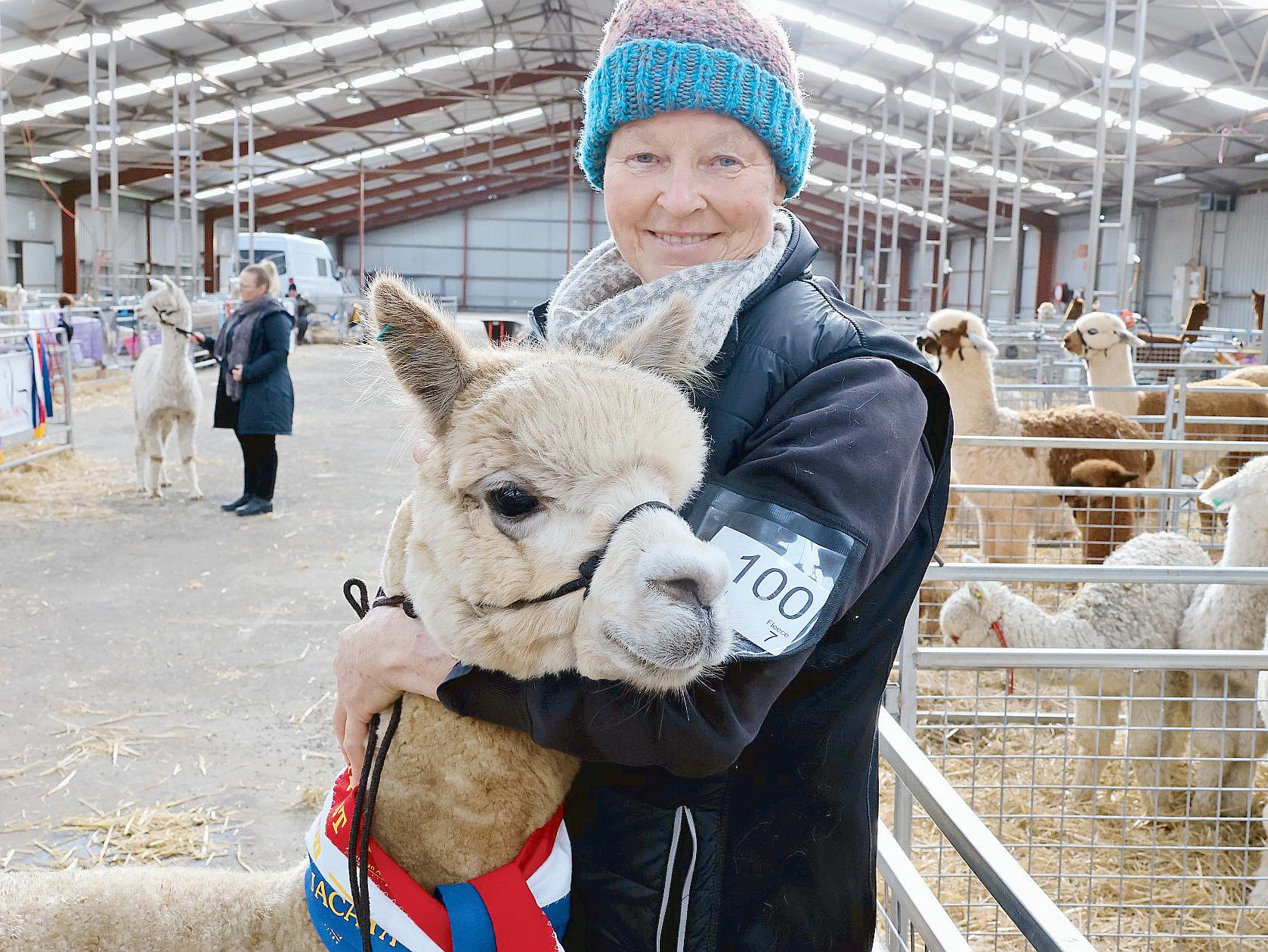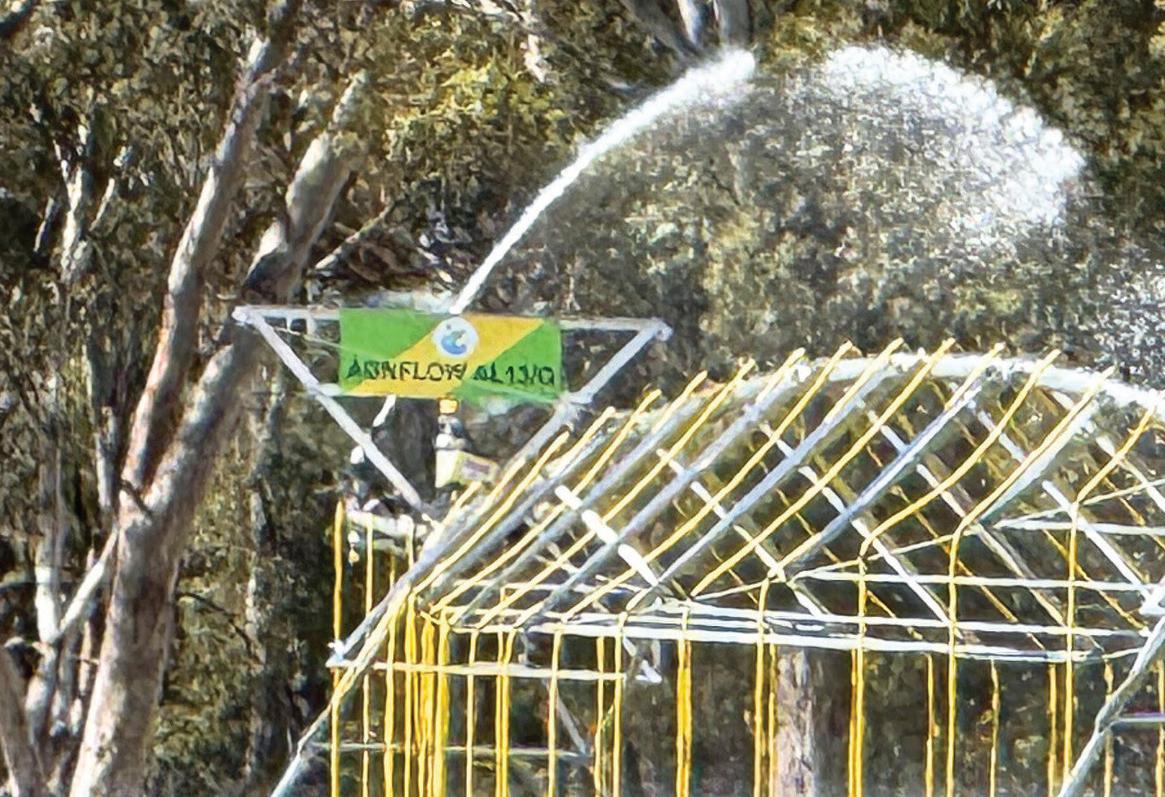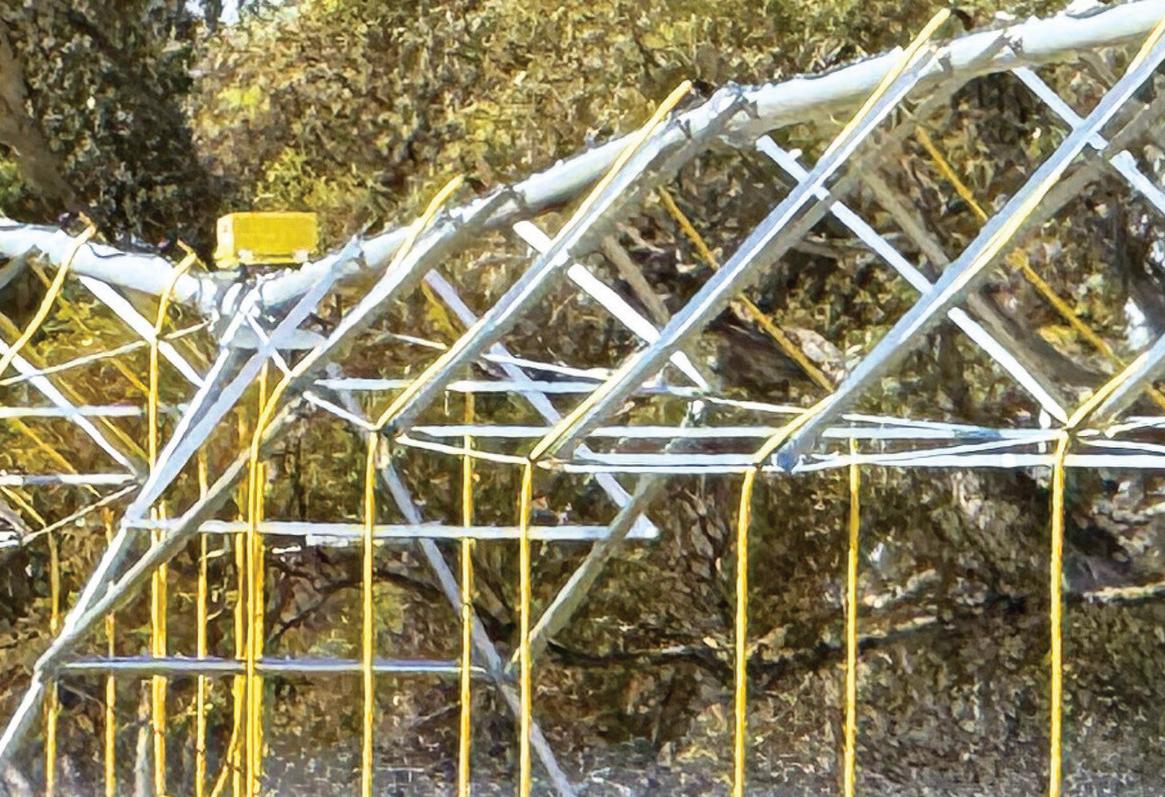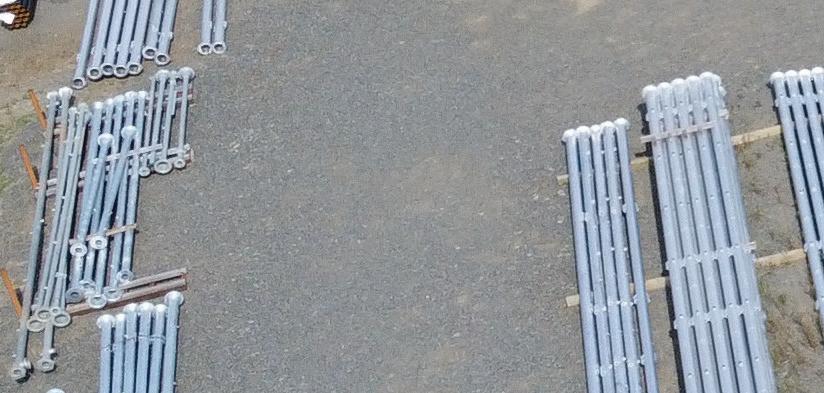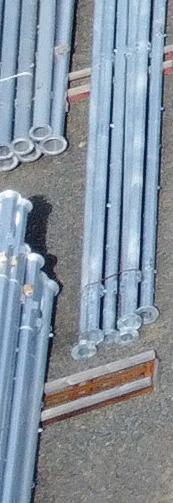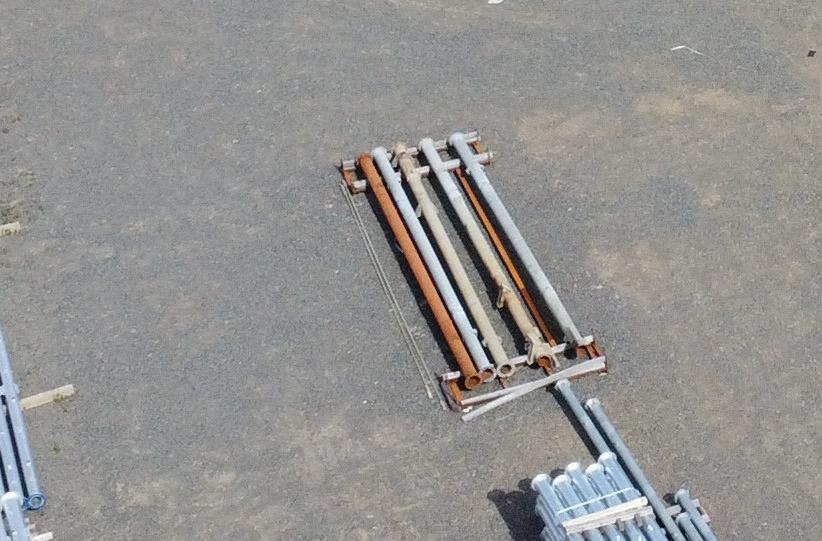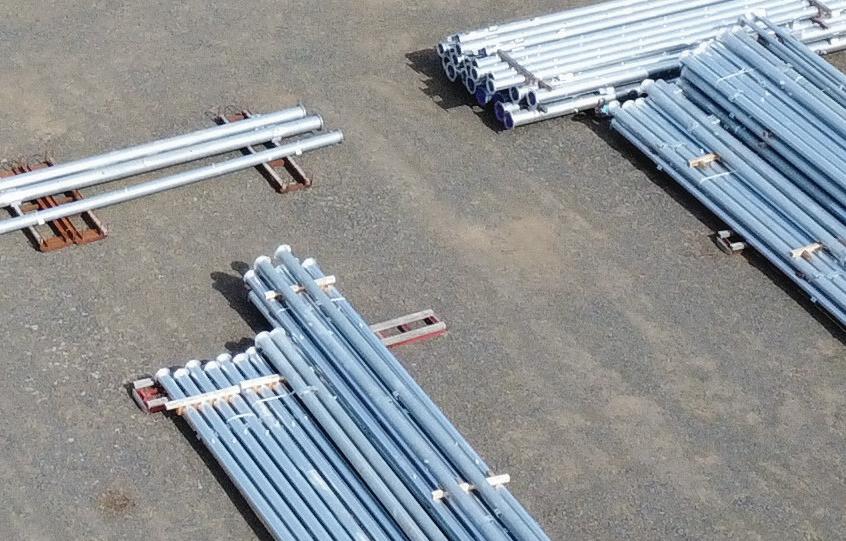


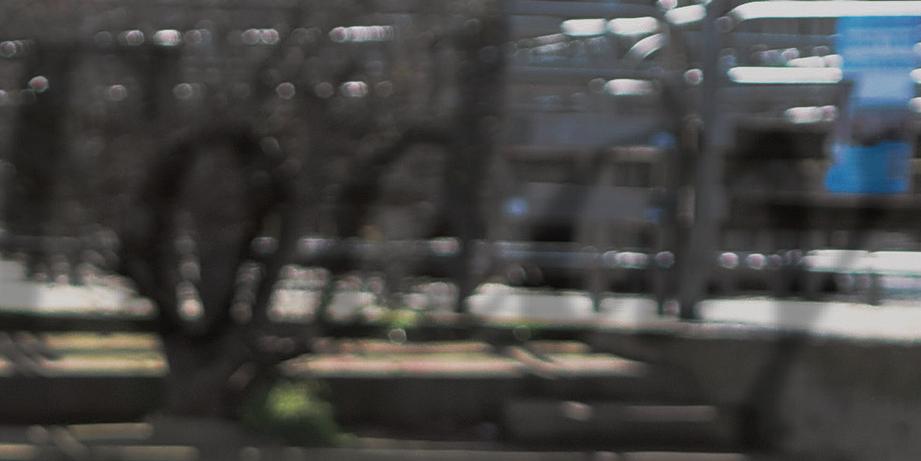
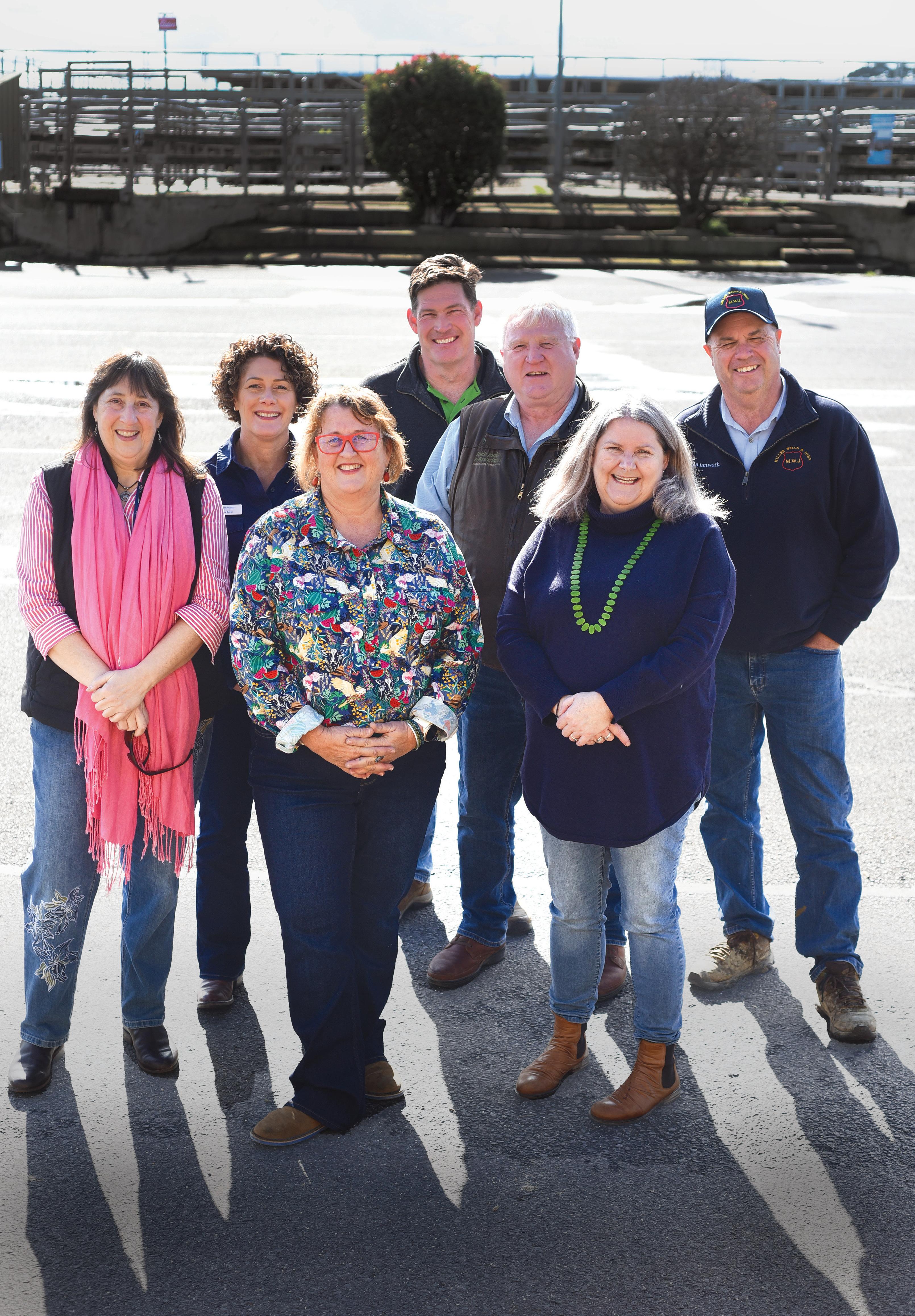










IN recent years, much of the valuation work which I have undertaken has been connected with farm succession. However, I am most assuredly not a succession planner. My clients have engaged me once they have made the decision to split their estate equally between their children. My involvement has its intricacies but none of the emotional conflict associated with significantly unequal bequests. However, on many occasions when talking about succession, farmers have alluded to the Napoleonic Code and its stipulations for inheritance. The Code, with some modifications, still applies in France and much of Europe, so it is worthwhile having a look at it and how it affects inheritances.
What is the Napoleonic Code?
To understand the Napoleonic Code, one must begin with the concept of testamentary freedom—the principle that a person may distribute their estate as they wish via a will.
This is a core principle in common law countries such as Australia, the United Kingdom, and the United States. However, civil law jurisdictions influenced by the Napoleonic Code take a different approach.
The Code Napoleon, introduced in 1804, enshrined the concept of forced heirship (reserve hereditaire). Under this doctrine, certain close relatives — primarily children and spouses — are guaranteed a fixed share of the deceased’s estate by law. This portion cannot be overridden by a will. The remaining portion, known as the quotite disponible (freely disposable share), may be distributed according to the testator’s wishes.
Under current French law:
• If the deceased has one child, that child is entitled to at least 50% of the estate.
If there are two children, they must together receive at least two-thirds (66.67%).
• If there are three or more children, they must collectively receive at least three-quarters (75%).
The remaining fraction (25–50%) may be left by will to anyone, including one child, a friend, or a charity.
The spouse has special rights, but not in the form of an automatic share of ownership unless named in a will. Instead, the surviving spouse has the option to:
• Take full ownership of the freely disposable portion, or
• Opt for a usufruct (lifetime use) of the entire estate. This option allows the spouse to remain in the family home or continue benefiting from the land (e.g. rental income or agricultural use) during their lifetime, with the property ultimately reverting to the children.
The purpose of this framework is to preserve intergenerational equity and to prevent disinheritance of close family members. However, it also severely restricts the ability to bequeath a family farm to a single heir unless there is


agreement among all beneficiaries or compensation is arranged.
France is not alone in this. Germany, Italy, Spain, and other countries shaped by Roman or Napoleonic legal traditions enforce similar rules. The Napoleonic Code’s influence also extends to Quebec, many Latin American countries, and former French colonies in Africa and the Middle East.
In France today, succession laws remain particularly important for agricultural land.
Wills are permitted but subordinate to the code’s stipulations. Bequeathing the whole farm to one child — while desirable for continuity —requires careful structuring or negotiation with the other heirs.
Where is the Code in Force?
Inheritance laws across developed nations fall broadly into two camps: those that follow testamentary freedom (e.g., Australia, UK, US, Canada, New Zealand) and those that enforce mandatory heirship rules (e.g., France, Germany, Italy, Spain). A third model — Islamic Sharia law — operates under a fixed but distinct formula, where shares are prescribed based on gender and kinship.
The Equality Versus Equity Conundrum
The modern preference for equal treatment — dividing an estate identically among children — often finds itself contrasted with the concept of equity, which aims for fairness based on individual circumstances. This distinction frequently surfaces in discussions of farm succession, where some argue that “equity” justifies allocating more of the estate to the farming child, while non-farming siblings receive lesser, often non-land, benefits. Equity seeks equality of outcome rather than simple mathematical equality. However, both involve equality as a general principle.
However, this notion of equity is rarely objective. Claims of contribution or sacrifice can be difficult to verify and are sometimes overstated. Farming children may indeed have worked


long hours on the family property, but often this has come with access to housing, vehicles, and income that may not be acknowledged as part of the broader inheritance picture. Assertions of “sacrifice” can also overlook the fact that other siblings may have foregone opportunities to participate in the farm or may have been excluded from doing so.
Equality, by contrast, is simple and transparent — each child receives the same. While this may not always feel “fair” to everyone involved, it does avoid the subjective and potentially divisive judgments that claims of equity often require.
Australian law does not impose forced heirship; individuals are generally free to distribute their estate as they wish. However, this freedom is not absolute. Under Family Provision legislation — enacted in every Australian state and territory — eligible persons may contest a will if they believe the deceased failed to make adequate provision for their proper maintenance and support. Eligible claimants typically include spouses, de facto partners, children, and in some jurisdictions, stepchildren or other dependants.
While these laws offer a safeguard against manifest unfairness, they do not mandate equal division among children. Nor do they provide an open invitation for disappointed beneficiaries to have a will overturned simply because they received less than they expected. Courts assess claims case-by-case, considering the applicant’s financial needs, the size of the estate, any competing claims, and the nature of the relationship with the deceased.
The underlying philosophical tension — between individual freedom, perceived fairness, and the desire for familial unity — remains unresolved. In practice, Australian families must navigate not only their personal values but also a legal system that simultaneously permits testamentary freedom but also invites judicial intervention in certain circumstances.



Nowhere is the practical consequence of enforced equality more evident than in France. There, the Napoleonic Code has led to severe fragmentation of agricultural land. A single farm may have dozens of part-owners, often absentee or urban, who must be consulted on leases, improvements, or sales. This complexity hampers farm viability, investment, and generational renewal.
To mitigate this, France has encouraged leasehold arrangements, family syndicates (Groupements Fonciers Agricoles), and preferential succession rules for farming heirs. Yet these require careful legal structuring and, often, significant family harmony—an elusive commodity in inheritance matters.
Australian families watching from afar may well recoil. But the French example is instructive: if rigid equality is pursued without structuring mechanisms like trusts, syndicates, or leasing frameworks, fragmentation and paralysis can follow. There is no “free lunch” in equal succession.
Despite the high stakes, public debate on farm succession in Australia remains weirdly muted. Professors Alison Sheridan and Lucie Newsome of the University of New England have conducted important research on gender equity and succession, noting that female heirs often self-exclude from inheritance discussions or defer to brothers. Their findings highlight the enduring power of informal norms—what one might call the “soft code” of rural Australia. Women’s reticence is partly cultural, partly strategic—many do not want to “rock the boat” or disrupt perceived harmony. But this silence has consequences. It perpetuates the myth that succession is a purely private matter, immune from broader questions of gender equity or economic efficiency.
Unlike France, where the legal system imposes structure, Australia relies on families to make difficult choices themselves. The cost is often borne in intergenerational conflict, poor estate planning, and — often horribly — fractured family relationships.
Conclusion
Even though the Napoleonic Code does not apply in Australia, families might give heed to its principles. A code focused on equity —however defined — forces us to confront difficult choices.
It also opens the door to creative solutions: leasing the farm to a single operator, establishing a family trust, or forming a syndicate that allows one sibling to farm while others receive rental income.
Succession planning, then, is not just about fairness or legal formalities. It is about vision — crafting a legacy that honours past contributions, ensures future viability, and respects family bonds. The French have one kind of code; Australian farmers must write their own.
THE Victorian Young Auctioneers Competition next month, sees 10 of the region’s best competing to be named the best in their field.
This year Hamilton will be represented by Henry Bensch of J. M. Ellis and Co., who, despite his youth, has spent years seeing great auctioneers in action.
The 19-year old will soon go up against the some of the best young auctioneers from Bendigo, Ballarat, Leongatha, Sale, and from South Australia’s Mt Gambier, Lucindale, Keith, and Kingston SE.
Mr Bensch grew up on a farm in Penshurst running sheep and crops.
His taste for auctioneering grewe after finishing his Year 12 studies at The Hamilton and Alexandra College, and working in saleyards casually for J. M. Ellis and Co.
Mr Bensch also studied Agriculture Certificate 1 and 2 while at school..
“I just worked casually in the saleyards for four years and then I was offered a role as a livestock agent, and began auctioneer school, that my boss Jack Hickey invited me to participate in, and I have just gone from there.” Mr Bensch said.
Training for the competition began for him by selling sheep at the Hamilton Regional Livestock Exchange (HRLX), and from there trying to get as much practice in as possible, and he has been lucky enough to have worked at the competition host venue, the Western District Livestock Exchange in Mortlake.
“I have been doing some work in Mortlake, doing as much selling as I can where the opportunity is, even when I am in the car driving around to clients - selling signposts - trying to practice my flow and repetition more than anything.”
It will be Mr Bensch’s first year in the com-
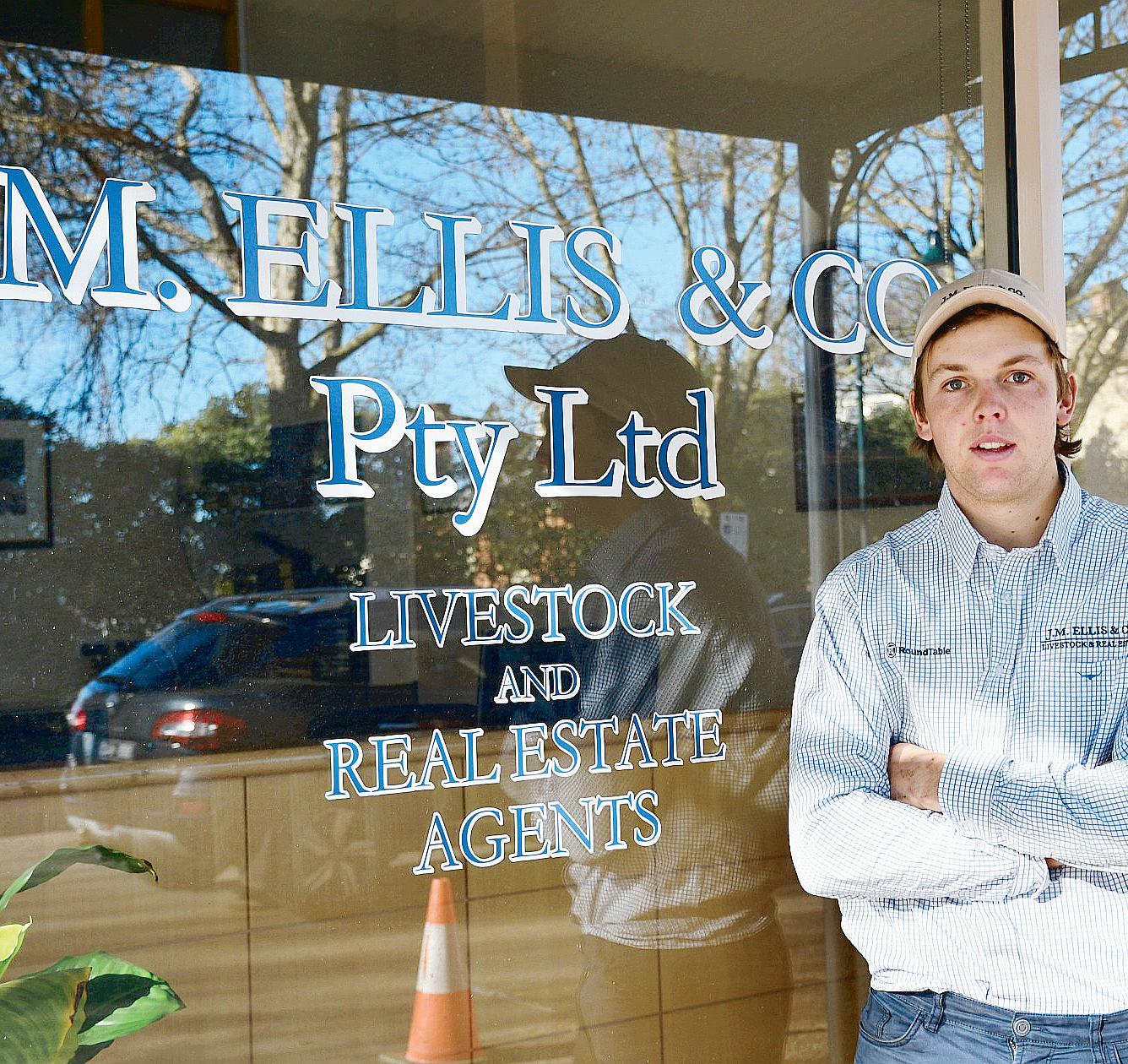
petition and he said most people there will be around 22 to 24 years old, “so a bit older than me at 19” , and because of that he wants to aim for the experience rather than the victory.
“It’s a great opportunity and it’s another way of getting better and more experienced,
and exposing myself to the other auctioneers.”
“I am putting myself out there to see what happens.”
Progressing through the competition means the winner and runner-up will go to the
2026 National Young Auctioneers Competition in Sydney.
“I feel more confident every time I get up, each week, and you get to know the buyers a bit more.”
“I have found when speaking with my boss Jack and a few other experienced auctioneers at the school, they always tell you to slow down and get it out, rather than trying to go 100 miles an hour really fast.”
“Slowly and clearly to start with, then once you get the gist of it you can go a bit quicker.”
Mr Bensch became a finalist of the competition after being selected for a two-day auctioneering school heat and performing well in it.
“There was about 30 of us and we had a final with all of the Victorian and South Australian Young Auctioneers and we had to sell three pens of cattle and three people graded us, and I was selected out of the top 10, which will go and compete in the final at Mortlake on the 15th September.”
Mr Bensch remembers his first go at auctioneering was on the bull sales on a Friday at HRLX, “which went pretty well, starting off slowly, and the last two or three weeks I have been given the sheep to sell on Wednesdays, gradually building on more and more confidence.”
“I am still pretty fresh to auctioneering.”
Mr Bensch wants to continue his work as both an auctioneer and as a livestock agent.
“I want to build a clientele and a relationship with my clients, and auctioneering can be another string to my bow and it will hopefully show another skill of mine.”
Mr Bensch said he is looking forward to the competition, and to meet and network with other auctioneers.
The Southern Young Auctioneers Competition will be held in Mortlake at the Western District Livestock Exchange on 15 September.
THE Australian Government is seeking input from community and industry stakeholders on the popular On Farm Connectivity Program to ensure it is delivering the best possible outcomes for primary producers through the upcoming third round.
Through more than $30 million in rebates provided over the first two rounds, thousands of primary producers have been able to extend connectivity and take advantage of connected machinery and sensor technology.
The Department of Infrastructure, Transport, Regional Development, Communications, Sport and the Arts has commenced public consultation on design aspects of

Round Three, ahead of opening applications later this year.
The department is requesting feedback on options to adjust the program to ensure opportunities are optimised for primary producers to address connectivity gaps, particularly in light of the unprecedented demand in Round Two.
Proposed changes to the program include refining the scope of equipment eligible for rebate, and streamlining processes by providing rebates directly to primary producers.
The public consultation builds on discussions already underway with state and Commonwealth government agencies and indus-




try representatives, including the National Farmers’ Federation, as well as feedback already received following delivery of the first two rounds.
The Government has allocated $53 million across all three rounds of the program over 2023-24 to 2025-26, as part of the Government’s Better Connectivity Plan for Regional and Rural Australia.
For more information and to have your say on the proposed changes for Round Three the Government website.
Consultation closes on Tuesday, August 26, 2025.
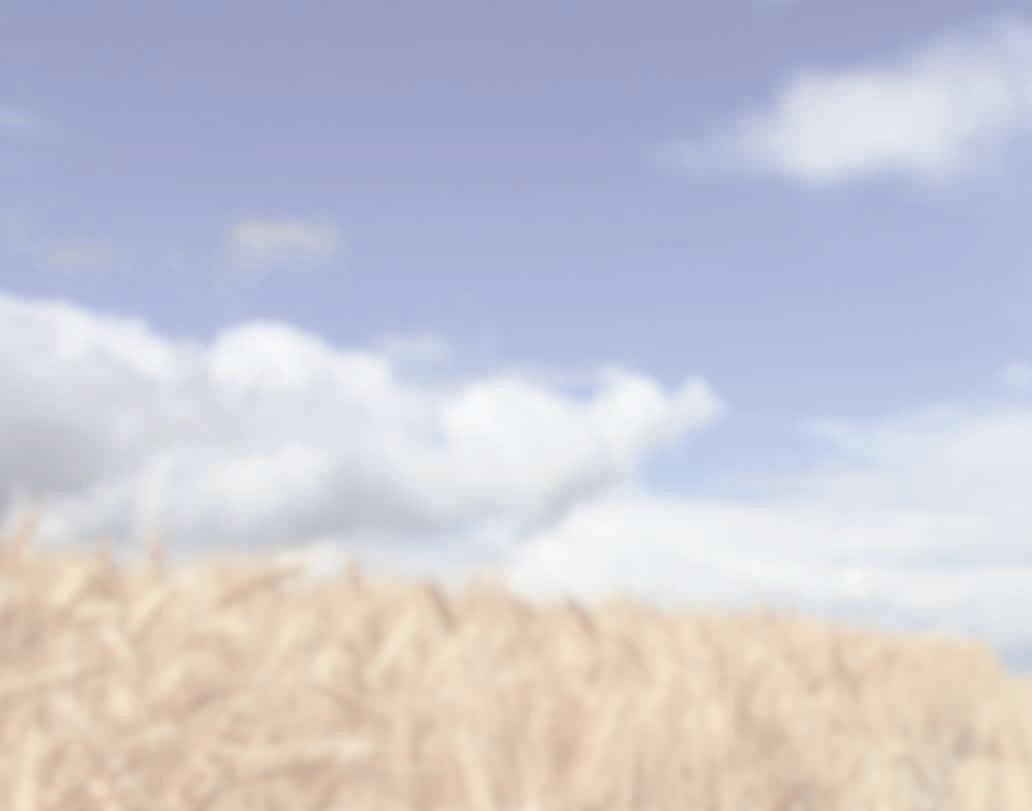




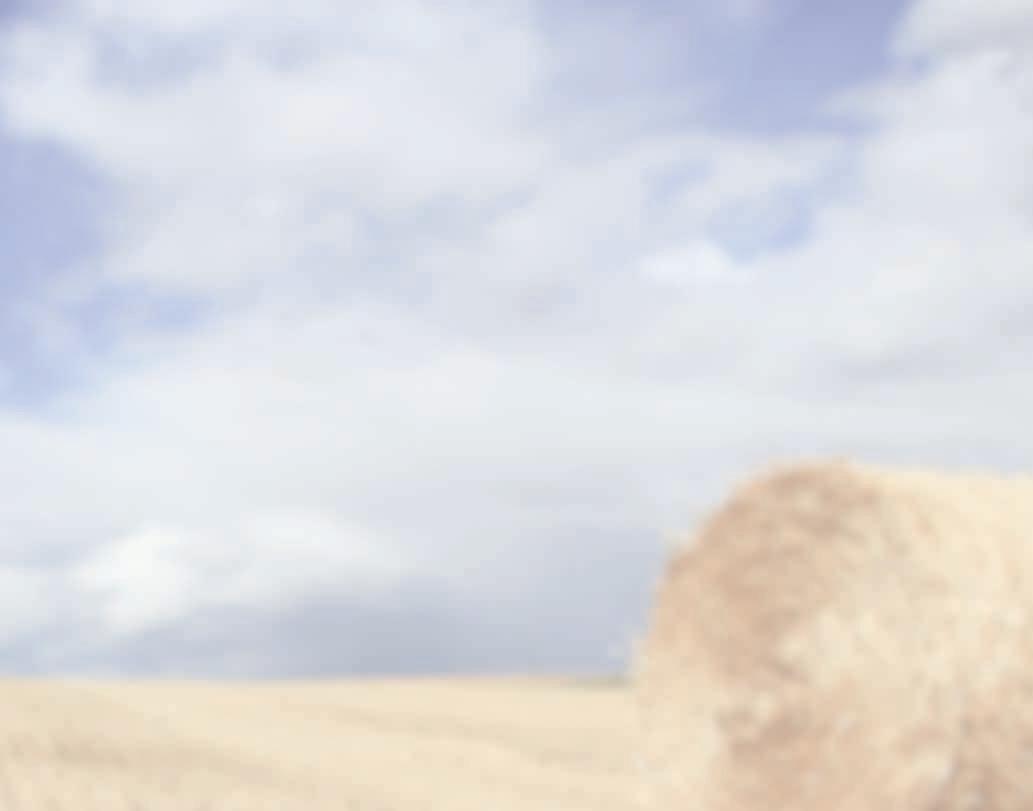



THE Mount Gambier Combined Agents have a new face at the head of the table.
Miller Whan and John stock agent Andrew Whan is now the chairperson for the combined agents, taking over from Chris Manser.
Mr Whan has been working in the stock agent industry for more than 30 years after following in his father’s footsteps.
“I have always been based here in Mount Gambier and I am a second generation stock agent so I followed my father around as a kid and our family moved to various locations when he was a stock agent,” Mr Whan said.
“I have seen plenty of stock, plenty of saleyards in my time and I know we have got a very good facility here and a very good client support and buyer support as well.”
He said he often enjoyed the connection to people at the saleyards as well as as a stock agent in general.
“You are networking with both your clients and the buying fraternity and the industry not just locally but also nationally as well while trying to achieve those goals for us and our clients,” Mr Whan said.
“It is actually a lifestyle, it is a great occupation and a great industry to be in.”
Regarding the Mount Gambier and District Saleyards, Mr Whan said the transformation project was non-negotiable to get underway.
“There is work continuing on that in the background and again council is putting things forward, we are still working towards a common goal between state and local government as well as the Mount Gambier Combined Agents and we have really got to work towards

the federal government funding,” he said.
“The Combined Agents is the voice for the agents but also representing our clients on what we feel as a group.
“We are the ones with the boots on the ground which work at the saleyards and we are here to represent our clients as that voice to council and keep the facility at the forefront going forward.”
Mr Whan said the local saleyards also remained “cash positive” which was rare in local government.
“It is very rare in local government to have to own a facility which actually makes money for you, which this does,” he said.
“What I want to see is these facilities keep going for the next 20 or 30 years and have the future generation at the forefront and relevant for our clients and the district’s livestock market.”
Mr Whan said leading into spring, it was now time for the recently implemented sheep eiD program to start.
He said although it was not time for marking stock at the moment, the new addition to the saleyards would start being utilised in October and November.









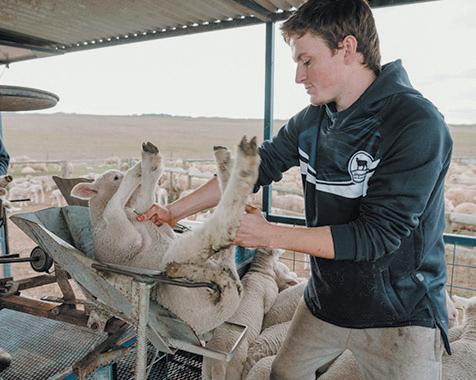

















MORE than 80 people gathered in the canteen of the Mount Gambier and Districts Saleyard last week.
The District Council of Grant hosted the inaugural Yarn over the Yardrails which was sponsored by the Primary Industries and Regions South Australia.
Mayor Kylie Boston emceed the event, speaking to the full house about the importance of coming together, swapping stories and sharing a meal after a couple of difficult years.
She said while farmers needed a few more wet months, the event was a chance to learn how to maximise the predicted spring rain while learning about how to come together. Those seeking mental health support are able to contact the following:
BeyondBlue 1300 22 4636
• Lifeline 13 11 14
• Medicare Mental Health 1800 595 212 National Centre for Farmer Health (03) 5551 8533

MAKING the most out of spring was a top topic for Mount Gambier/Berrin-based agronomist Rick Jordan.
Speaking at the District Council of Grant’s Yarns over the Yardrails, Mr Jordan gave attendees his top tips to make the most out of the upcoming spring season.
Mr Jordan said there was an increasing growth phase with August not quite being spring yet noted the season was fast approaching.
“We are riding this transitional period at the moment which is going to bring out a little longer and we will get a spring period and we will have a really large increase in growth,” Mr Jordan said.
“There is positive climate forecasting at the moment as opposed to the last 24-months because the negative climate forecasting actually started before we had the dry spell last year and we have a higher level of control than most think and are prepared to admit.
“We are coming into August with 98.2mm historical average rainfall for August and 70mm for September, 51 for October and combined that is more than 200mm of rainfall for a typical spring.”
He said spring was a good period where farmers would grow between 65 and 70 per cent of their feed for the year as well as about 80 per cent of the food they would produce for the year.


“To know what is in front of you for the next three months is important so you can actually make some plans and we have got a 75 per cent likelihood of achieving 200mm from August to September period and we are going to achieve well over 100mm pushing out into November,” he said.
Mr Jordan said there would be about 100mm of rain expected in September and noted farmers would need to start looking and thinking about what they wanted to plan for the season.
“Spring happens quickly, it accelerates and then hits us, then we have to do something about it and then it is gone all while it is where we produce the majority of the growth which happens over a three-week period,” he said.
“If you miss that you are dropping percentages, if we look at our peak spring growth it is somewhere around 65 to 70 kilos a day of growth rate so every 30 day period is 2.1 tonnes per hectare and if you get the timing wrong with fertilizer you can halve that.”
Mr Jordan said August was not a “typical August” and would remain wet and cold.
“We have got extended day lengths which will give us growth but we are still going to have a relatively wet and cold August which gives farmers a bit of time up their sleeve,” he said.
“If you have actually got things growing, grow them as much as you can now, make sure you have got good fertilizer and start
to get rotations and there are things you do now which can accelerate growth and that curve actually starts to climb and where it climbs from is where you are starting at through August.”
Mr Jordan said during spring farmers needed to know what they wanted and how much they would take in quality while utilising the feed produced and feed production timing.
“You can shift instead of having that massive peak where you cannot eat at the same time, you can shift that either by final conservation or spraying a paddock or sowing something which comes in later,” he said.
“If you do not have a grazing rotation you are limiting yourself, about 90 per cent of the options are available to you and if you are able to use feed reserves to establish a rotation, the moment you establish a rotation, you establish it, you establish paddocks and you can address it and put stock in a paddock, hold them in there for a bit longer rather than spread them out over a little bit of green you have got and you can actually then spread urea on that paddock or fertilizer or liquid to get more growth.”
He said once the rotation process started, farmers would be able to get more growth which would then extend the period stock would be in the paddock and give more options moving forward.
Mr Jordan said rotations would reduce pasture stress and treat it faster giving a fast-
er response.
“Shutting up paddocks is not the right thing to do right now, but if you have a rotational grazing, every paddock you are shutting up over the course of the next month is shut up for product conservation because when it is due to be grazed, if there is another paddock which has got as much feed in it, it becomes a solid paddock, you are not shutting it,” he said.
“The other one to do right now is address fertility issues, making sure you know what your fertility base is and it is also the time to be thinking about if you are phosphorus deficient, people are holding back on fertilizer because things are tight and they are spending that on hay.”
Mr Jordan said if farmers wanted phosphorus to not be deficient in spring, they would need to look at putting it in August as it would take three-to-four weeks to become available and non-limiting.
“Do not put it out in mid-September expecting to cut it in early October, then it is going to give you the response, if you spend the money on fertilizer make sure it is going out this month, addressing partial density and capability issues,” Mr Jordan said.
“Looking at the spring forecast of continued rainfall it is of a lower risk but could be something short term crop can allow you to make quite a conservation off of some of the other pasture areas.”











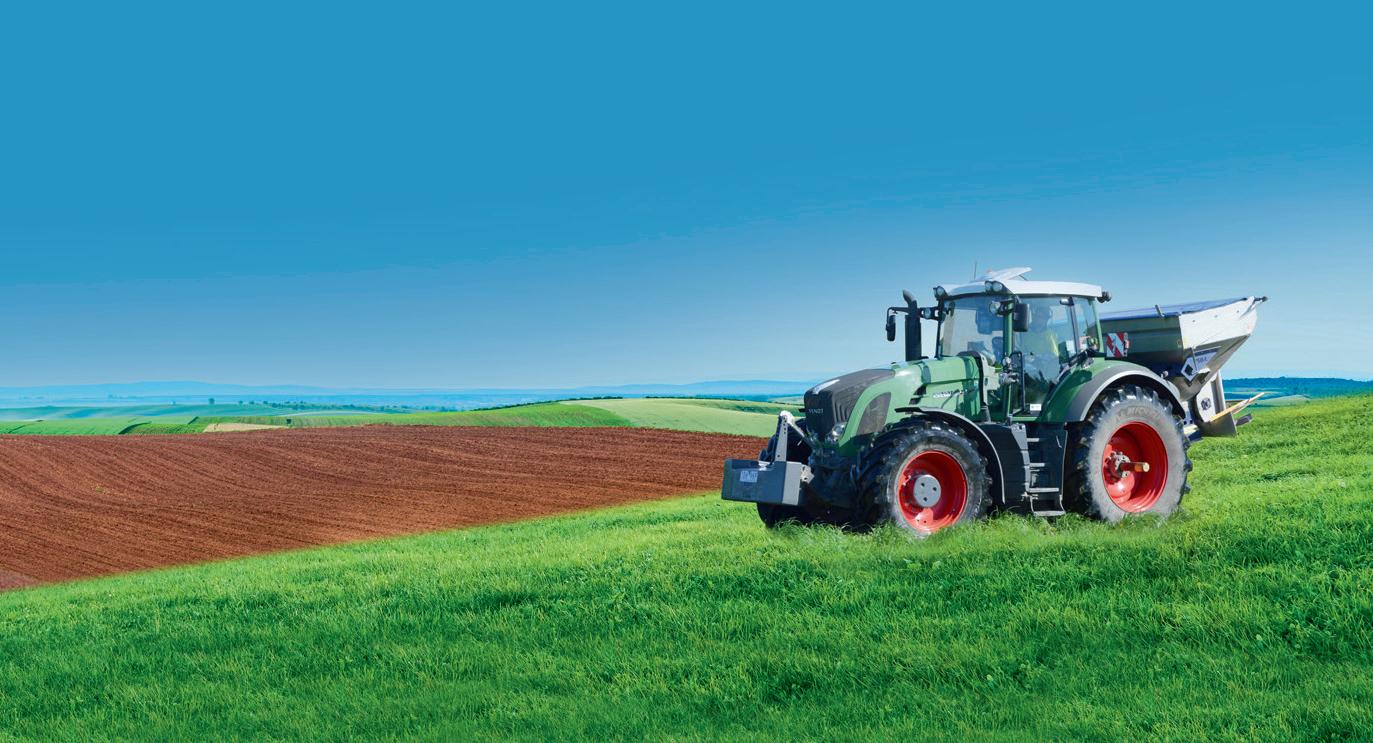


MENTAL health of farmers was highlighted at the Mount Gambier Saleyards last week with BlueWren Connection founder Heather Ellis speaking to farmers and stock agents.
The first of many speakers at the District Council of Grant’s Yarns over the Yardrails, Ms Ellis spoke about her passion for rural and regional Australia.
BlueWren Connections is a dedicated consultant agency aiming to empower corporate and regional communities, teams and individuals.
During her presentation, Ms Ellis discussed her recent paper on the social impacts from community saleyards and its positive impact on farmers’ mental health.
“If we do not put our own oxygen masks on, we cannot look after our families, our businesses and our communities,” Ms Ellis said.
“When I look at the social value of saleyards, for me it was deeply personal, it was not just a professional piece of research, I grew up on the land, attending saleyards like many people here.”
She said during her research she found the commonality was socialising in terms of belonging and connection.
“It was about having a yarn and catching up with your mates but we have never collected this data before in a way that actually could show government funders why saleyards were an important place for people to come together and connect,” Ms Ellis said.
“Some of the other key elements that came out were looking at the relationships in terms of networking and learning from each other.”
According to the founder, 102 people were interviewed as part of her research as well as observations of six different saleyards and 140 more respondents from online.
“When we pulled all that together there were so many powerful stories about how saleyards impacted each individual in different ways but some of the commonalities was that when things got really tough it was somewhere you might hear someone else’s story and you would realise you were not alone,” she said.
“We cannot underestimate the power of human connection and we are all hardwired for connection, some of us might be on land, on our own and this is your family, your community.
“There is a real importance of actually why they need to exist in terms of coming together, creating an opportunity for people to come together and catch up and we can never underestimate that human caring and compassion not only at the saleyards but in our canteens play a powerful role in who we have got in the hot seat there in terms of operating from that heart, caring and genuine kindness.”
Ms Ellis said people in the region and community would band together and look out for



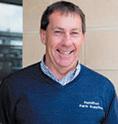

one another.
“It is really great to have a written report which highlights the importance of the connection and the passion which happens in our regions in terms of saleyards and the vital role that plays,” she said.
“Never underestimate the power of that deep listening and catching up with other people in terms of creating space for others and sharing stories.”
She said while people met socially at other community events such as football or the races, they did not share deeply about difficult topics or how to navigate challenges yet she found those topics were easily discussed at the saleyards.
“I think that happens because the relationships are there, the trust is there and this is a place they do business as well so it is a different space,” she said.



Ms Ellis noted the data collected would further benefit saleyards across Australia - including Mount Gambier and District Saleyards - for funding opportunities due to the research showing a proactive environment where people were able to reach out and band together.
“It is not just local government but everyone as a community to actually have a chat and get the members and those politically to think about who else needs to be a part of the conversation and influence for change,” she said.
Ms Ellis also said stress was a commonality within responses for the research especially of late due to tough conditions.
“On a good day we can be frustrated about all these things but we need to put our energy into being proactive, we can still be frustrated by situations which happen in life but if we hang out here like this and it consumes us we spend our whole time being reactive and frus-
trated and annoyed,” she said.
“If we spend too much time in the reactive stage it impacts our mental health and wellbeing so we can still be frustrated about situations but we need to think about what we can do.”
She said when the season was dry and tough decisions needed to be made, creativity and innovation was found when farmers shifted their energy to being proactive rather than reactive.
“When we think about those connections as human beings we need to shake hands, give each other a pat on the back, we need that physical touch in terms of ‘how are you going’ for some people,” she said.
“If you are isolated on a property by yourself this is where you come in and have a chat because at the grocery stores, often people are moving too fast.”


VETERINARIAN Andrew Hoare, of South East Vets, says farmers are learning to get through the tough times better.
During the District Council of Grant’s Yarns over the Yardrails, Mr Hoare said the last few seasons, farmers had learned how to get through the tough years and had coped better mentally.
“I think everyone has been better mentally this year than last year and I think that is purely because everyone got through last year and realised they can get through it,” Mr Hoare said.
“We have got it pretty well handled if we were in the situation like Coleraine and those sorts of people where they have no water then that changes the plan again and once you have done something, you have done it hard and you get through it, the next year you can do it again and probably push yourself a little bit harder again.”
He said by now, farmers often knew how much feed reserves would be needed with most people able to roughly work it out because they had done it last year.
“We have worked out how well our animals can produce reproductively in these five years,

it has been surprising last year and this year how well our cows have come getting back in calf,” he said.
“Heifers have been the ones which have
been troublesome, that is purely just from not growing over summer because we have not had any feed and we have worked out what animals classes are most affected, young growing animals they have done it tough, they have really struggled whether that be due to protein deficiencies over summer and autumn or just general gross food.”
Mr Hoare said what farmers could do better next year was guarantee there was enough supplementary feed in reserve, whether it was buying it now or start formulating a plan for the future.
He said farmers should be getting close to working out now what optimal stocking rates were.
“If we worked on this year or last year as our worst possible year we should know what we can do, what we can run and we can probably only go up from here,” he said.
“The other thing we can do better is perform all our animal husbandry procedures at the best time and that is where we will get more involved on more farms including with pregnancy testing.”
He said knowing animal requirements was also important, whether it be feed, trace elements, parasite control or injections.
“The other thing we need to do is look after ourselves, stay fresh, take a break every so often and that is a really difficult thing to do over the last six-to-eight months,” he said.
Mr Hoare also spoke to attendees about energy requirements for animals and keeping it in mind when putting together a plan for next year’s feed.
He said a 550kg animal would require 60 megajoules of energy and for every 50kg under or over for an animal, farmers would need to add on or take off five megajoules.
“In regards to milk production, every litre an animal produces it requires five megajoules to produce a litre of milk, 34 megajoules is the amount of megajoules you need to gain a kilo of weight and to lose a kilo of weight you need 28 megajoules,” Mr Hoare said.
“We also have not seen a great deal of animal health problems over the last year or two and it has been surprising and I would say we have seen a fair few worm problems and that is from over grazing paddocks and re-grazing too quickly.”
Mr Hoare said worming was probably at the wrong time as well which farmers and veterinarians had previously been able to “get away with”
FARMERS attending the District Council of Grant’s Yarns over the Yardrails event last week were treated to an insight for future funding opportunities.
Primary Industries and Regional South Australia (PIRSA) representatives Penny Kazla and Justine Drew spoke to farmers about the current grant opportunities available.
Ms Drew said there were 21 different pieces of assistance available as well as a range of financial help including $1500 rural support grants.
“There is the on farm drought infrastructure grants as well as connecting community events which today is one of those and we are very pleased to support this event and it is a perfect example of what we are trying to do with that program in particular to provide opportunities for people to just come together and maintain their networks and have a bit of a yarn, getting information like this, it is exactly what we are looking for with that program,” Ms Drew said.
“There is the pest management program, feral deer control which has been done in this region has been funded under that and there has been a big rabbit control program in the

Upper South East and the next round of the sheep eiD program.”
She said the community assistance also included active clubs and keeping local sporting clubs going with costs while supporting activities.
“There is also rural financial counseling which is a one-on-one confidential service for primary producers and a small business financial counseling service available now under that program,” she said.
“We have got financial counselors based in this region who can help people with that and it is always worth looking at and reaching out early before things become really sticky



and it is a good message for farmers and their businesses.”
Ms Drew said PIRSA had received many grant applications from the Limestone Coast region with “hundreds” of the on-farm drought infrastructure grants being approved as well as many connecting community events planned.
“The drought package provides a boost to the financial counseling service and it also provides a boost to our mentor program,” she said.
“We have got a number of new initiatives coming online with our farmers as well.”


Ms Kazala said maintaining mental health support was also an important part of PIRSA’s funding opportunities.
She said mental health was an important part of any business with all members of the community benefiting from support.
Ms Kazala said while everyone benefited from the support and mental health promotional activities - including getting together, being social, eating well and exercisingthere were those who started to struggle, those who were needing targeted help and those who were medically diagnosed.
“Most people who are under prolonged, which is what is caused in a drought, will benefit from those with support available and there are phone consultations which can be an outreach, telehealth and in office support,” she said.
“Farmers are the backbone of our state, they keep us fed and clothed.
“You would not have a paddock with one cow in it or one sheep so we need to be growing together and be supportive of each other, we are all social animals and so please reach out and help each other.”
More information about PIRSA drought funds are available on its website.

THOUSANDS of people flocked to the annual Sheepvention event in Hamilton earlier this week.
The highly-successful event is the biggest rural expo in Western Victorian and, under blue skies, attracted hundreds of farmers, traders, families, school students and the general public to the two-day event held on Sunday August 3, and Monday August 3.
The two-day event added an extra attraction on the Sunday evening with a performance by Aussie rocker Shannon Noll at concert in front of a crowd of hundreds.
Reporter Ciaran Thow was busy at Sheepvention capturing some of the action in these two pages of photographs .

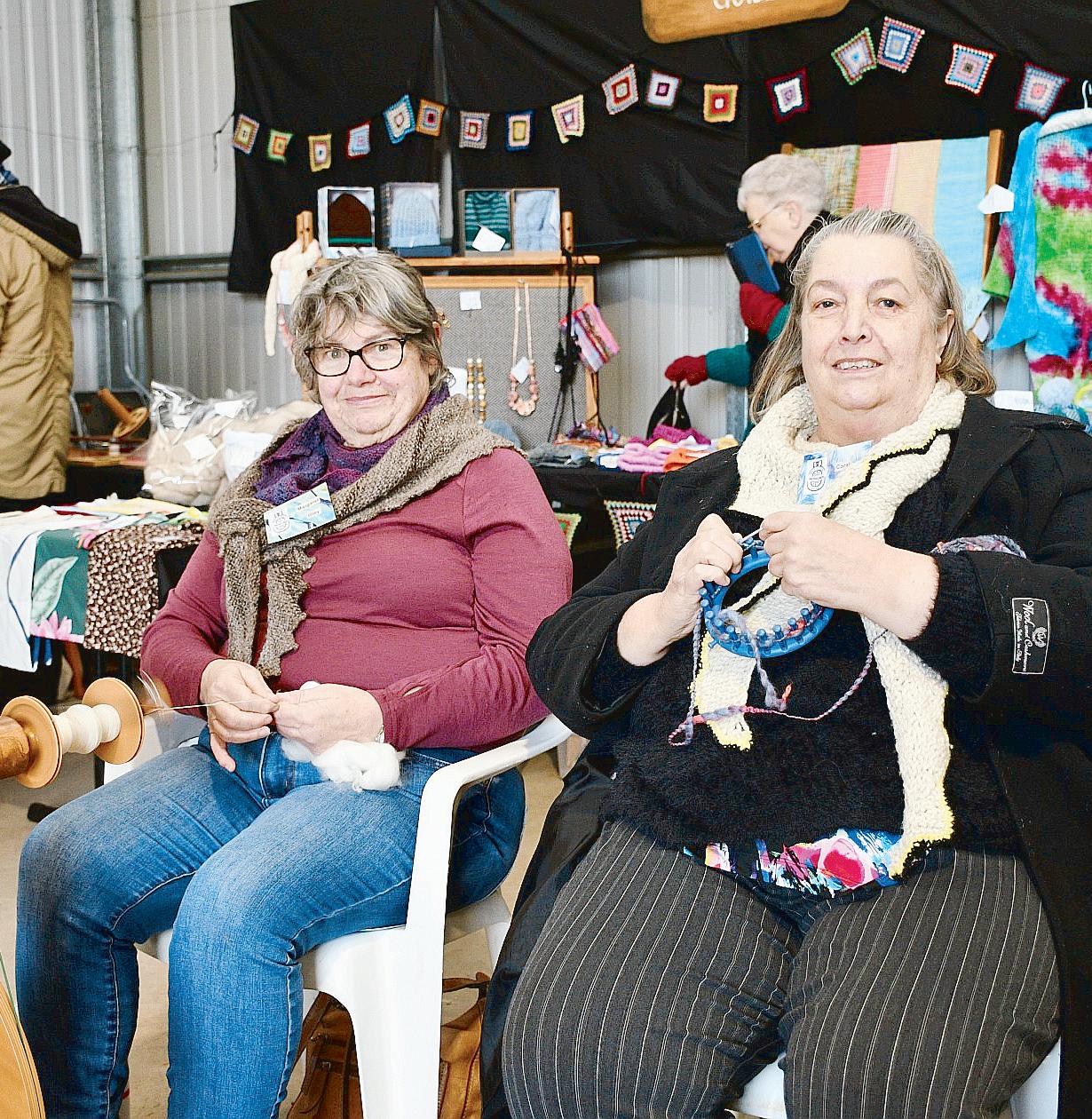


The Border Watch
Address: Level 1 / 1 Commercial Street East, Mt Gambier SA 5290
Telephone: 08 8741 8170
Website: www.borderwatch.com.au
Hamilton Spectator
Address: 84 Gray Street, Hamilton, Vic 3300
Telephone: 03 8318 5758
Website: www.hamiltonspectator.com.au
Portland Observer
Address: 92 Percy Street, Portland, VIC 3305
Telephone: 03 8318 5757
Website: www.portlandobserver.com.au
CONTACT US
Editorial:
Email: editorial@agtoday.com.au
EDITORS:
Elisabeth Champion
E: elisabethchampion@tbwtoday.com.au
Marlene Punton
E: marlene.punton@portlandobserver.com.au
Advertising:
Email: advertising@agtoday.com.au
ADVERTISING CONSULTANTS
Leesa Cook
E: leesa.cook@portlandobserver.com.au
Sierra Laird
E: sierra.laird@portlandobserver.com.au
Christine Cock
E: christine.cock@tbwtoday.com.au
Christine Black
E: christine.black@tbwtoday.com.au
Josh Phelan
E: josh.phelan@tbwtoday.com.au
Published by SA Today Pty Ltd. ACN 644 311 937

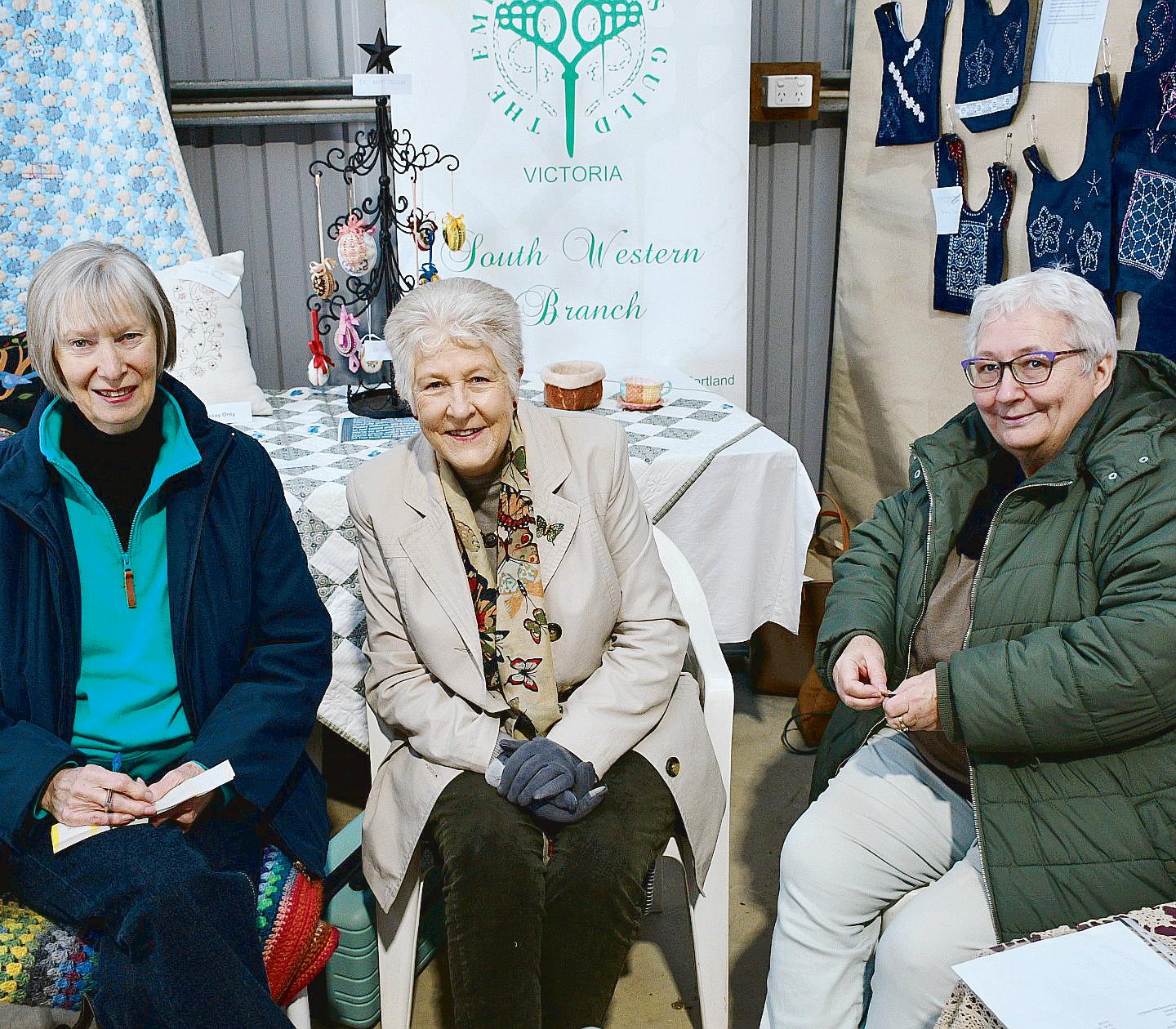


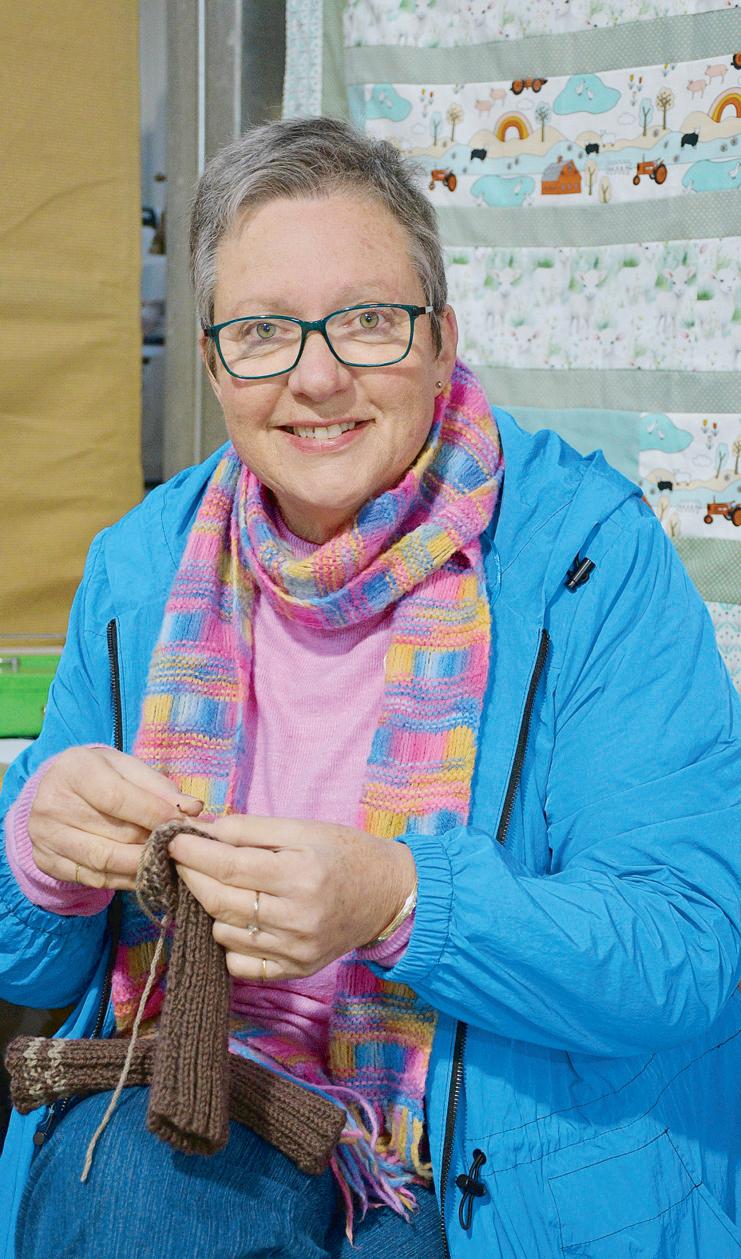


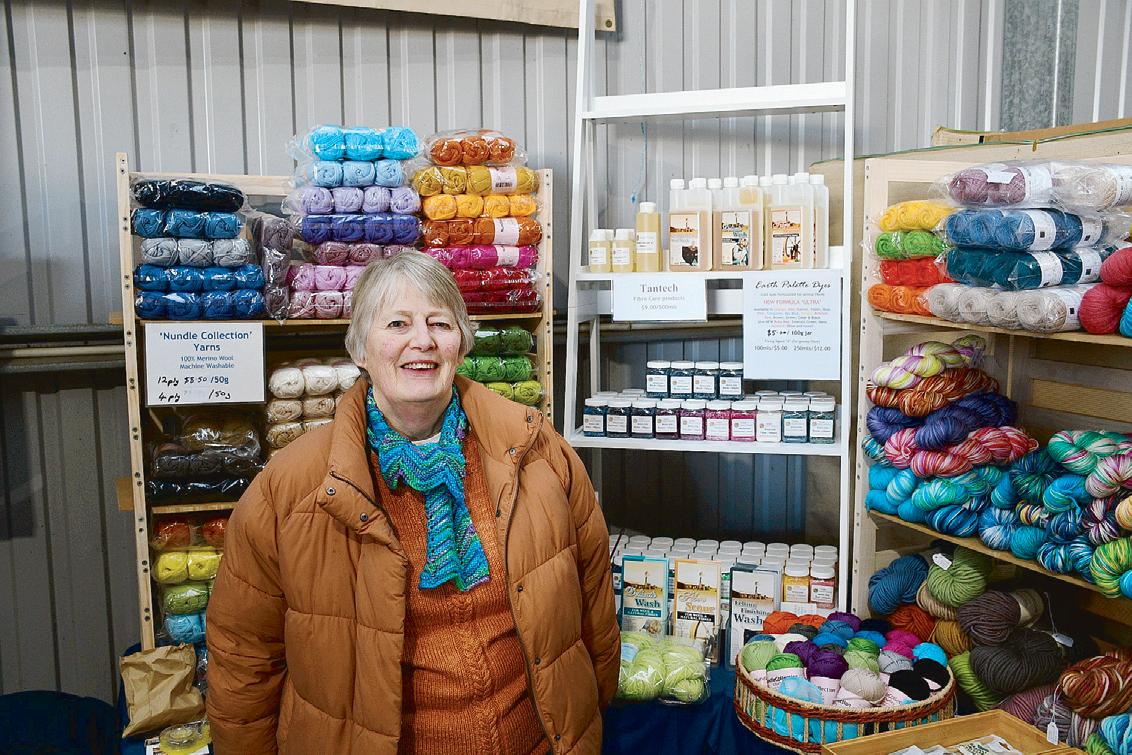
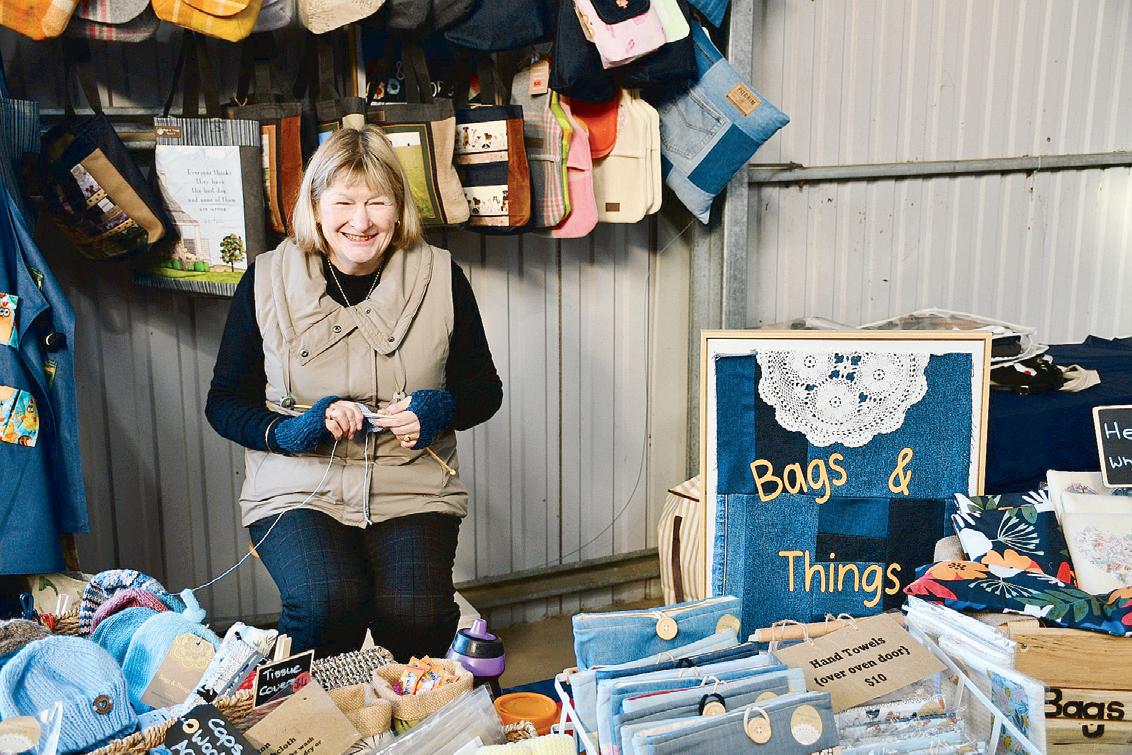




MACKILLOP Farm Management Group has recently welcomed Kate Morris to the team in the role of project officer.
Ms Morris will primarily be managing the Meat and Livestock Australia (MLA) and the Grains Research and Development Corporation (GRDC) Legumes in Mixed Farming Rotations Project.
Since completing a Bachelor of Agricultural Science at Adelaide University in 1994, Ms Morris has worked across a range of agricultural extension roles including providing soil survey and irrigation monitoring services at Yandilla Park Services at Renmark, as a landcare officer in the Murraylands Region.
More recently she worked as saltland and catchment agronomist with the Limestone Coast Landscape Board.
Through this role, trials of note included the veldt grass nutrition and veldt grass companion species trials near Culburra.
This seeks to quantify veldt grass response to P and K and establish the best options for companion species.
Additionally, at Western Flat, a trial was established to assess lucerne production and persistence under lime treatments in acidic soil.
After a Graduate Diploma of Education, MHist and MEdTL, Ms Morris turned to the education sector as a teacher for many years before rejoining the agricultural extension space.
Ms Morris said she was passionate about providing relevant, quality data and information to support on-farm decision-making, through trials and investigations.
“I believe that effective collaboration is the key to developing relevant projects for our re-

gion,” Ms Morris said.
“I am looking forward to getting to know the MFMG members and having conversations about their farming systems and practices.
“By building relationships with our farming members, we can get a deep understanding of the most relevant projects for their farming practice.”
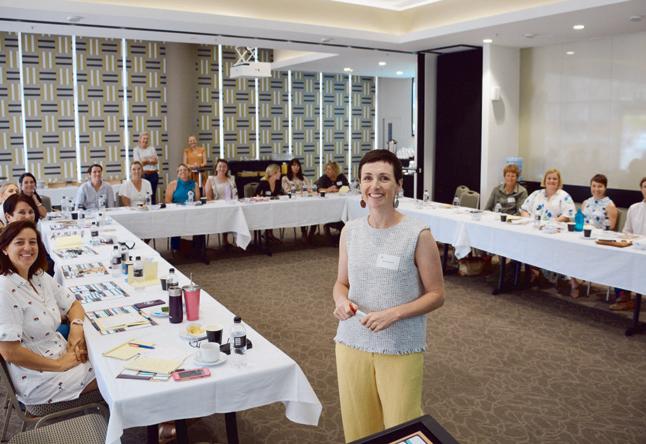
PRACTICAL workshops designed to give regionally-based women skills and tools to improve financial ‘wellness’ were delivered recently.
Hosted by food and agribusiness banking specialist Rabobank and the bank’s South Australian Rabo Client Council, the Rewiring Women’s Wealth and Wellness workshops were offered free of charge in Coonawarra and Clare on July 29 and 31 respectively.
The workshops, run in partnership with women’s financial advocate Zoe Lamont, have been delivered across regional Australia since 2012 and are designed to provide women in regional locations with access to financial education in their own communities.
The interactive workshops aim to give rural women time to pause, reflect, and reconnect with their goals, finances and wellbeing.
AGRICULTURE Victoria’s online farm water calculator has been a reliable tool for land managers to keep an eye on their farm water supplies.
It has now been upgraded and offers an even more user-friendly and accessible experience.
This valuable tool helps farmers estimate: water requirements across the farm • storage capacity in tanks and dams
• water supply potential from sources like shed roofs, waterways, groundwater and catchment runoff.
Agriculture Victoria Climate Change Development Officer Heather Field said by adjusting rainfall inputs, users can explore how their water supply might perform under different climate scenarios, helping them plan for dry
seasons or unexpected shortages.
“The calculator now works seamlessly on mobile phones and tablets, making it easier to perform in-field assessments.
“It complements the existing Summer Water Calculator, which focuses on livestock water needs and dam longevity during hotter months.
“For the most accurate results, farmers are encouraged to use the calculator alongside regular monitoring of water use, storage and supply,” Ms Field said.
Try the upgraded tool today at https:// go.vic.gov.au/44llzBj
Across the region any farmer can access technical information and advice to help manage the impacts of increasingly difficult seasonal conditions.
These services will be delivered in partnership with a range of technical experts, including farm business advisors, livestock nutritionists, soil, water and pasture specialists and veterinarians.
The technical decision-making, support program provides tailored advice through oneon-one consultations, webinars, workshops, field days, and online tools and information.
Find more information on drought support at www.agriculture.vic.gov.au/drought or call 136 186.
A new tool helps farmers estimate water requirements across the farm and storage capacity in tanks and dams.
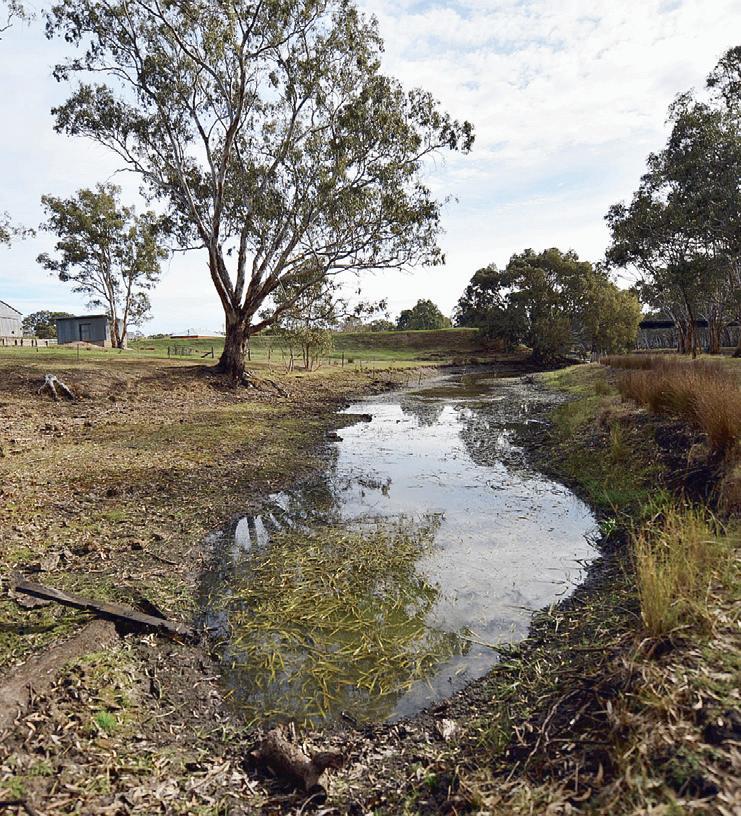





NEXT month, hundreds of Australian producers will leave their farms behind — not to protest, but to lead the way forward.
The Farming Forever National Summit will bring together over 300 participants in Canberra, including farmers, innovators, and policy influencers. Their shared goal: to collaborate, exchange ideas, and shape the future of agriculture through a nature-positive approach.
The event will be hosted by Farmers for Climate Action (FCA).
FCA CEO Natalie Collard, and former Food and Fibre Great South executive officer, said farmers were already adopting clean tech, slashing inputs and stacking new income streams — all from the same piece of land.
“Farmers are driving the move toward nature-friendly farming — 71 per cent are selffunding climate action such as clean energy to future-proof their farms,” said Ms Collard.
“Australian farmers have always been clean and green and now we’re extending that to be as friendly to nature as possible.
“This summit puts that leadership on the national stage and gives producers the tools to adapt — on their terms.”
Held at Hotel Realm, Canberra on 1 – 2 September, the summit marks 10 years of FCA’s farmer-led movement.
Designed to deliver action — not just conversation — it will equip producers with practical tools, build relationships across the supply chain and send a strong message to decisionmakers in an election year.
Attendees will hear directly from farmers who are:

Turning biodiversity into passive income
Electrifying machinery to cut diesel costs
Embracing agtech to boost profits
Hosting wind and solar while grazing livestock
“Hosting modern clean energy helps our farmers continue their traditions,” Ms Collard said.
“They’re still grazing sheep under solar panels and raising cattle around turbines — but now with an income stream that keeps
families on the land.”
The potential returns are significant. Recent analysis shows farmers could earn up to $40,000 per year for every wind turbine hosted on their property — while still using 98 percent of their land for food production.
Farmer Conversations
“Australia has some of the toughest farming conditions in the world — but that’s made us
leaders in climate-smart agriculture” said SA pastoralist Ellen Litchfield who is looking forward to networking with farmers from across the country.
“Great stuff happens when farmers come together. Whether it’s after a panel session or over drinks — it’s those everyday conversations that spark powerful change.”
Who’s Speaking: Climate, Clean Energy, and Innovation Leaders in Ag
Panels and workshops will showcase leading voices in climate science, biodiversity, innovation and real-world production, offering practical strategies for farming smarter in a changing landscape.
Headline speakers include:
Brent Finlay – Cattle farmer, former NFF president and MD of Finlay Agricultural Industries
Mike Casey – Cherry grower and CEO of Rewiring Aotearoa, who has electrified every machine on his New Zealand orchard
• David DJ Jochinke - National Farmers’ Federation president
• Tim Jarvis AM – Environmental scientist, author and explorer
• Professor David Lindenmayer AO – One of Australia’s foremost biodiversity and naturefriendly farming experts
Professor Mark Howden – IPCC vice chair and director, ANU Climate, Energy and Disaster Institute.
For more information please visit: www. farmersforclimateaction.org.au/farmingforevernationalsummit25.






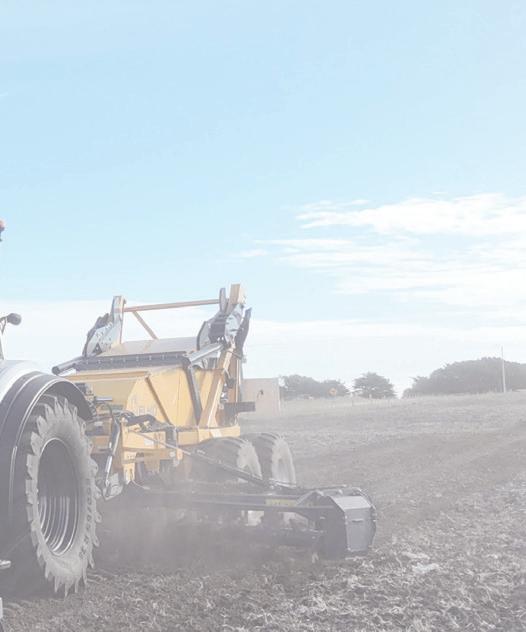
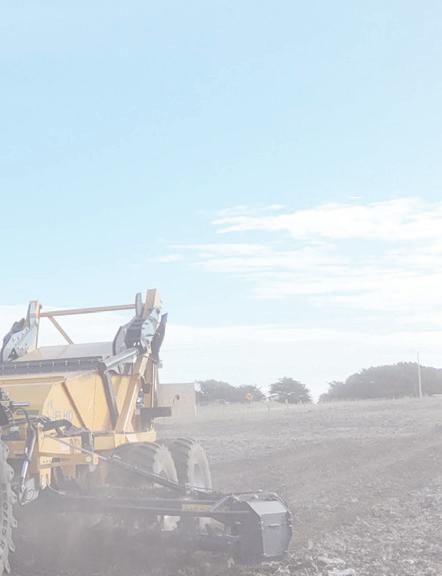

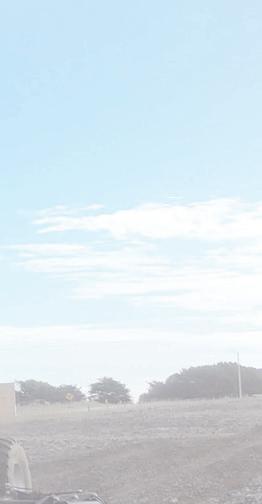


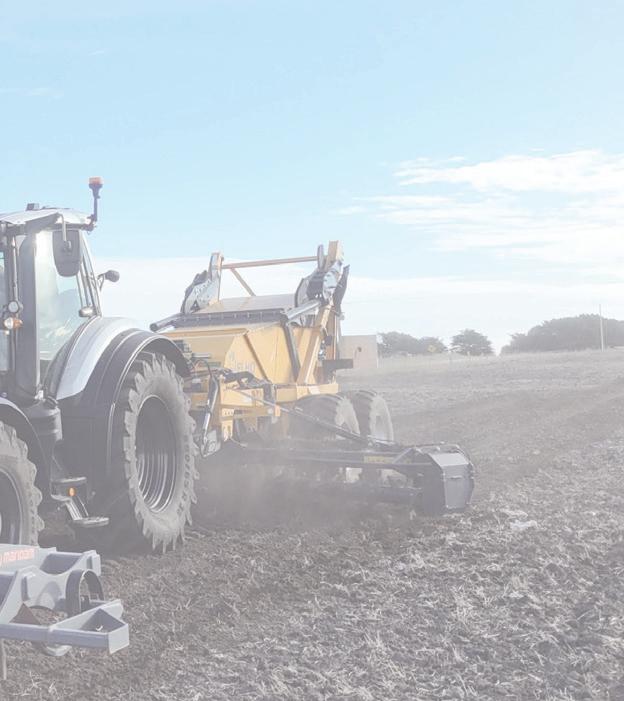

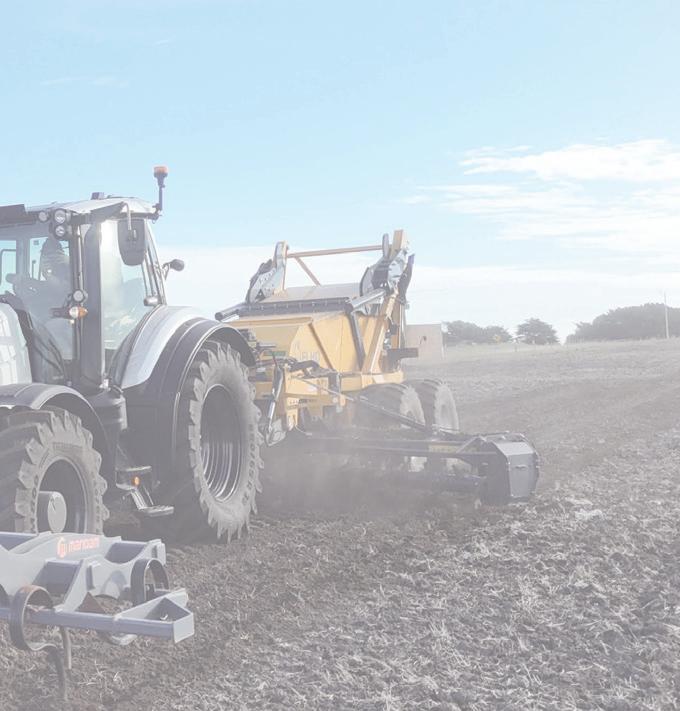





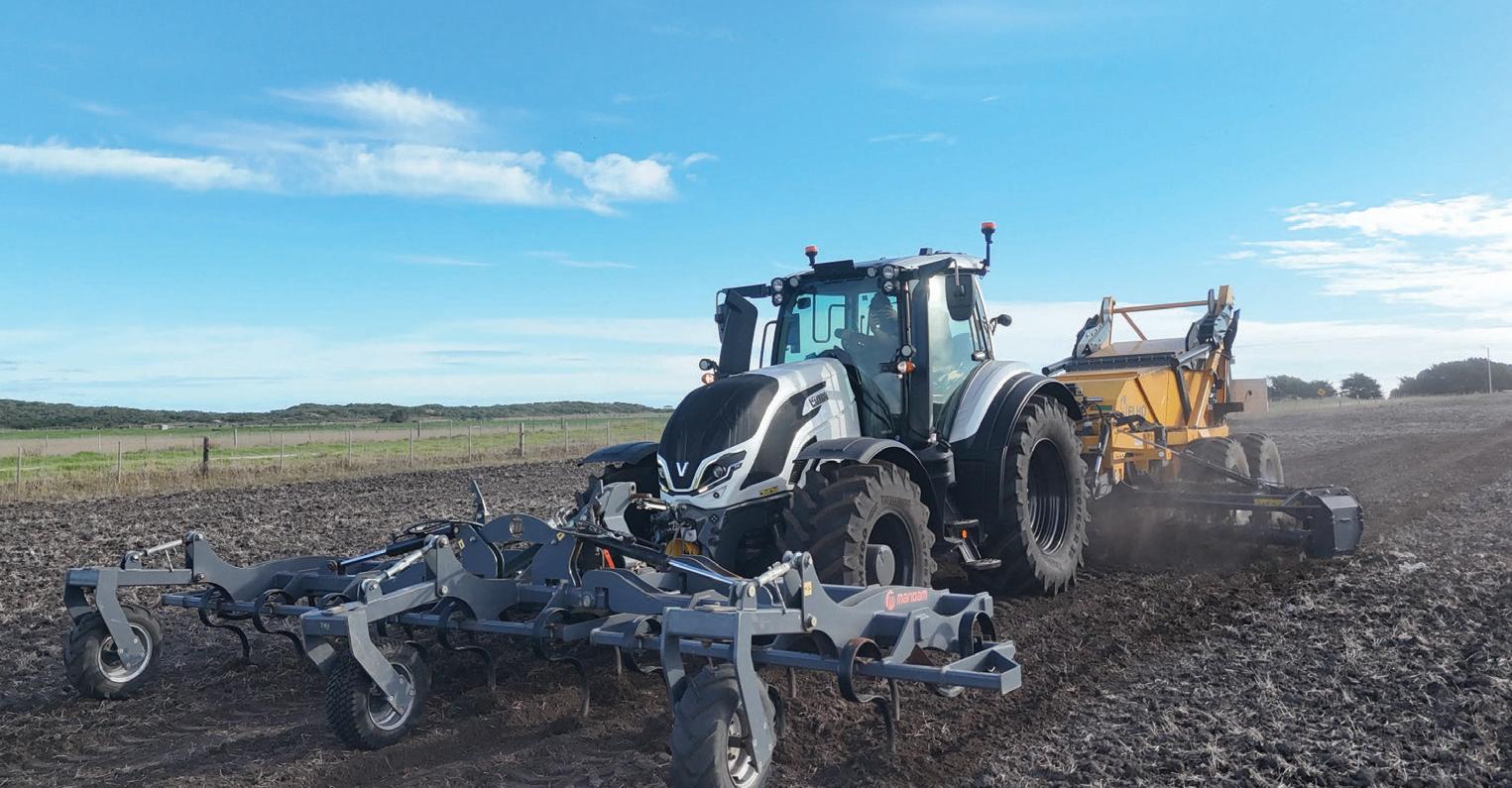

















SOUTH West TAFE agricultural students will learn from the ground up with a new industry seed demonstration site at the Glenormiston campus.
As part of a partnership with AGF Seeds, 25 different varieties of grasses are being trialled on the old football oval.
South West TAFE Head of Industry, Land and Engineering, Ed Roache, said the new demonstration site would broaden the learning experience for students.
The students will play an active role in maintaining the site, applying what they’ve learned in the classroom as they monitor and support the growth of each seed variety.
“We want our students to experience the world of agriculture as far and wide as possible,” Mr Roache said.
“We’ve got the ability for students to get hands-on with livestock, pastures and machinery, this adds to that practical training by incorporating the world of agronomy, plants, grass and soils.”
“Students will get to learn that you get different outcomes with different varieties and that different soil types affect growth. It’s bringing a practical element to their studies.”
Most of the students are off farms and can relate this experience back to their properties.
“The beauty of this is that we’re partnering with industry,” Mr Roache said.
“If we work with industry, we know we’re going to get the best practice and outcomes for students.”
South West TAFE has more than 70 agricul-

tural students at Glenormiston, ranging from Certificate II through to a Diploma of Agriculture.
Mr Roache said it was also hoped the demonstration trials would inspire students to look at the many different future pathways in agriculture which could lead to further studies.
AGF Seeds sales agronomist Rhys CottamStarkey said the company wanted to showcase some of its varieties to the area and
South West TAFE wanted a demonstration plot for teaching students about growing different species.
“We put the two together and it’s something that will benefit everyone,” Mr CottamStarkey said.
The connection came about through AGF Seeds’ relationship with the Terang Co-op Rural Store.
“We have joined forces with the Terang Co-op in selling seeds and providing support
and this demonstration site takes it to the next level,” Mr Cottam-Starkey said.
The site is germinating at the moment and AGF Seeds and the Terang Co-op plan to host grower open days in coming months.
“We have about 20 different species as well as some mixed species so we’re going to show the differences, especially what is going to be your best seed for quick feed in years when we have a really late break and dry summer,” Mr Cottam-Starkey said.
AS Australia marked National Farm Safety Week last week, the Australian College of Rural and Remote Medicine (ACRRM) is calling for greater support to ensure farmers and their communities can access highquality, local healthcare.
ACRRM President Dr Rod Martin says investing in the health and wellbeing of rural and remote communities is essential to creating safer farming environments.
“Farming is one of the most physically and mentally demanding jobs in Australia, and our farmers face unique health and safety risks every day,” Dr Martin said.
“To support safer farms, we must support the health of the people who run them that means having skilled, locally-based doctors who understand rural and remote life and can provide care when and where it’s needed.”
Dr Martin said Rural Generalists (RGs) are the specialists who are central to the solution.
“Rural Generalist doctors bring advanced skills in emergency medicine, mental health, surgery, maternity care, anaesthetics, and more and are trained to deliver whole-of-life care in settings beyond the urban footprint,” he says.
“Whether it’s responding to a machinery accident, providing mental health support via telehealth, or managing chronic disease, RGs are vital to the fabric of healthy rural communities.”
ACRRM is the only medical college dedicated to training a Rural Generalist workforce.
“Investing in RGs will not only improve rural health outcomes it will help stabilise the rural medical workforce and support the sustainability of rural towns,” Dr Martin said.
“Healthy farmers mean safer farms, it’s time we recognised that building up rural healthcare is part of building up rural Australia.”



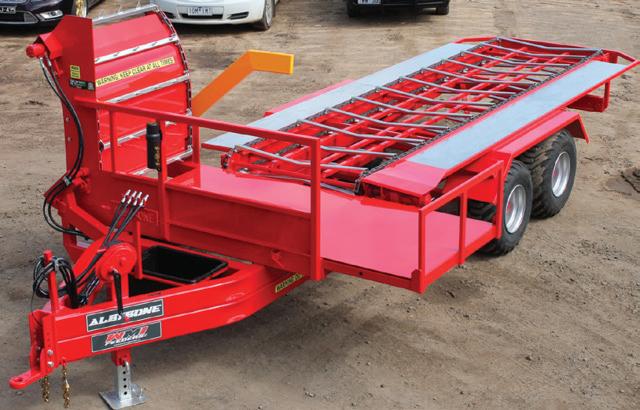



A NUMBER of new projects have been unveiled as part of the Sheep Industry Fund and Cattle Industry Fund.
More than $3.5m has been allocated from the sheep fund while $528,000 has been allocated from the cattle fund for projects and activities aiming to strengthen South Australia’s livestock sector in 2025-2026.
The funds will support the state’s sheep and cattle industries through investment in practical and strategic areas.
This will include animal health, biosecurity, traceability, industry development and advocacy.
It will also help safeguard market access and support trade while promoting continuous improvement in livestock practices.
There were a total of 62 applicants for this year’s funds with 47 to the Sheep Industry Funds and 15 to the Cattle Industry Fund.
In total, all applications sought more than double the available funding.
A further $200,000 and $380,896 from the Sheep Industry Fund has been allocated for rebuilding the SA Dog Fence and its ongoing maintenance.
The approved 2025-2026 Sheep Industry Fund applications have a combined co-funding contribution of $9m over the lifetime of projects, bringing the total investment in sheep industry priorities to $12.5m.
While the 2025-2026 Cattle Industry Fund applications have a combined co-funding contribution of $878,640 over the lifetime of the projects which brings the total investment in the cattle industry priorities to $1.4m.
Approved Projects:
Sheep Live Compliance Program, $125,000
- Department of Primary Industries and
Regional SA
SA Ovine Footrot Management Program, $1.1m - Department of Primary Industries and Regional SA
SA Biosecurity Extension, $220,430 - Livestock SA
Clever Clovers to Improve Animal Health, $50,000 - South Australian Research and Development Institute
• Novel Culture System for Mycoplasma Vac, $106,113 - The University of Adelaide
Pneumonia Rapid In-Field Test, $26,796 - The University of Adelaide
Sheep Blowfly Sterile Insect Technique Implementation, $100,000 - South Australian Research and Development Institute
Sheep Pain Mitigation Program, $165,132The University of Adelaide
NLIS Sheep Program, $133,000 - Department of Primary Industries and Regions SA
• Box Flat Wild Dog Control, $5100 - Murraylands and Riverlands Landscape Board
• Livestock SA Industry Development, $903, 040 - Livestock SA
• South Australian Sheep Expo, $19.500 - South Australian Sheep Expo Council
Empowering SA Sheep Industry Women, $48.750 - Women Together Learning
SA Merino Sire Evaluation, $5000 - SA Merino Sire Evaluation
• WoolTAG Toolbox Allowance, $10,000 - AWI Extension SA
• Sheep and Wool Producer Communications, $45,500 - AWI Extensions SA
Lead Ag Teacher of SA 2025-2026, $78,507AgCommunicators
LambEx 2026 Sponsorship, $50,000 - 28 National Limited


ADVERTORIAL
INDUSTRIAL manslaughter laws carry serious consequences for farming businesses across South Australia.
Under the Work Health and Safety Act 2012 (SA), a person conducting a business or undertaking, including farm owners and operators, can face charges of industrial manslaughter if a worker dies due to a breach of safety duties and gross negligence or recklessness is proven.
The penalties are significant: up to 20 years in prison for individuals and fines of up to $18 million for companies.
These laws apply to all types of operations, including family-run farms, broadacre enterprises and small-scale producers.
If you employ workers, engage contractors or have people working on your property, these laws apply to you.
So, what does this mean for farmers? It means safety must be front and centre in day-to-day operations.
Risks tied to machinery, vehicles, chemicals, fatigue, working alone and mental health all need to be identified and managed through safe systems of work.
It’s essential to review safety practices regularly, keep accurate records and ensure everyone on the farm (including casuals, contractors and family members) receives proper training. Importantly, you don’t have to intend harm to be liable under the law. A failure to act or a “she’ll be right” approach could carry life-altering consequences.
Even if a case doesn’t result in an industrial manslaughter conviction, lesser

offences under the WHS Act can still apply and lead to prosecution.
Changes to the legislation introduced in July 2024 have reinforced the seriousness of WHS obligations, especially in high-risk industries like agriculture. If you’d like to review your farm’s WHS compliance or need guidance following these legislative changes, Mellor Olsson’s Agribusiness and Employment Law teams are here to help. Call us on 08 8414 3400 for clear, practical advice tailored to your farming operation.
Mellor Olsson

AGRICULTURE plays a vital role in feeding the nation, and Samasz is proud to support farmers and contractors with reliable equipment and services.
Since 1984, Samasz has led farm machinery manufacturing in Europe, with over 170,000 machines in operation worldwide. Known for innovation and durability, Samasz continues to expand its footprint across Australia.
The Perfect Cut cutterbar delivers precision, durability, and easy maintenance, ensuring maximum yield and cost-effectiveness.
The KDT mower range, a customer favorite, is built from high-quality materials to withstand tough conditions. Samasz’s KDTC mowers, introduced in 2008, mark their entry into the central suspension disc mower market and have evolved to meet modern demands.
High-quality forage is essential for dairy and meat production, and Samasz meets this need with a versatile range of suspended rotor rakes — from single to twin rotor models.
Their tedder range includes five models, from the compact P4-531 to the robust P8-890, all designed for performance and durability. For hilly terrain, a front support wheel accessory enhances turf protection.
Samasz Australia proudly offers harvest equipment through a growing dealer network, catering to hobby farmers and large-scale contractors alike. Whatever the size of your operation, there’s a Samasz machine to suit. For more information, contact Greg Allan Farm Machinery at 03 5231 5136 or visit samasz.com.au.

AT Lampard’s Lamb Marking, the objective is to streamline your operations through a convenient marking service.
Lampard’s manages all administrative responsibilities, ensures appropriate insurance coverage, recruits trustworthy personnel, and completes all essential tasks involved in marking.
The team at Lampard’s is reliable, efficient, and enthusiastic individuals dedicated to providing a top-notch service.
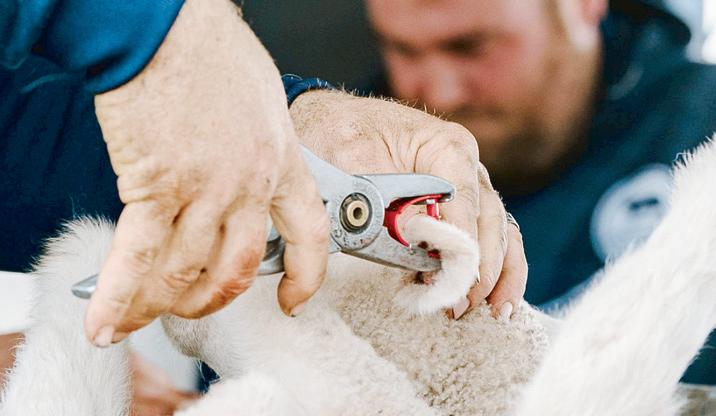
Lampard’s understands the rigorous demands of farming and the extensive list of tasks it involves,

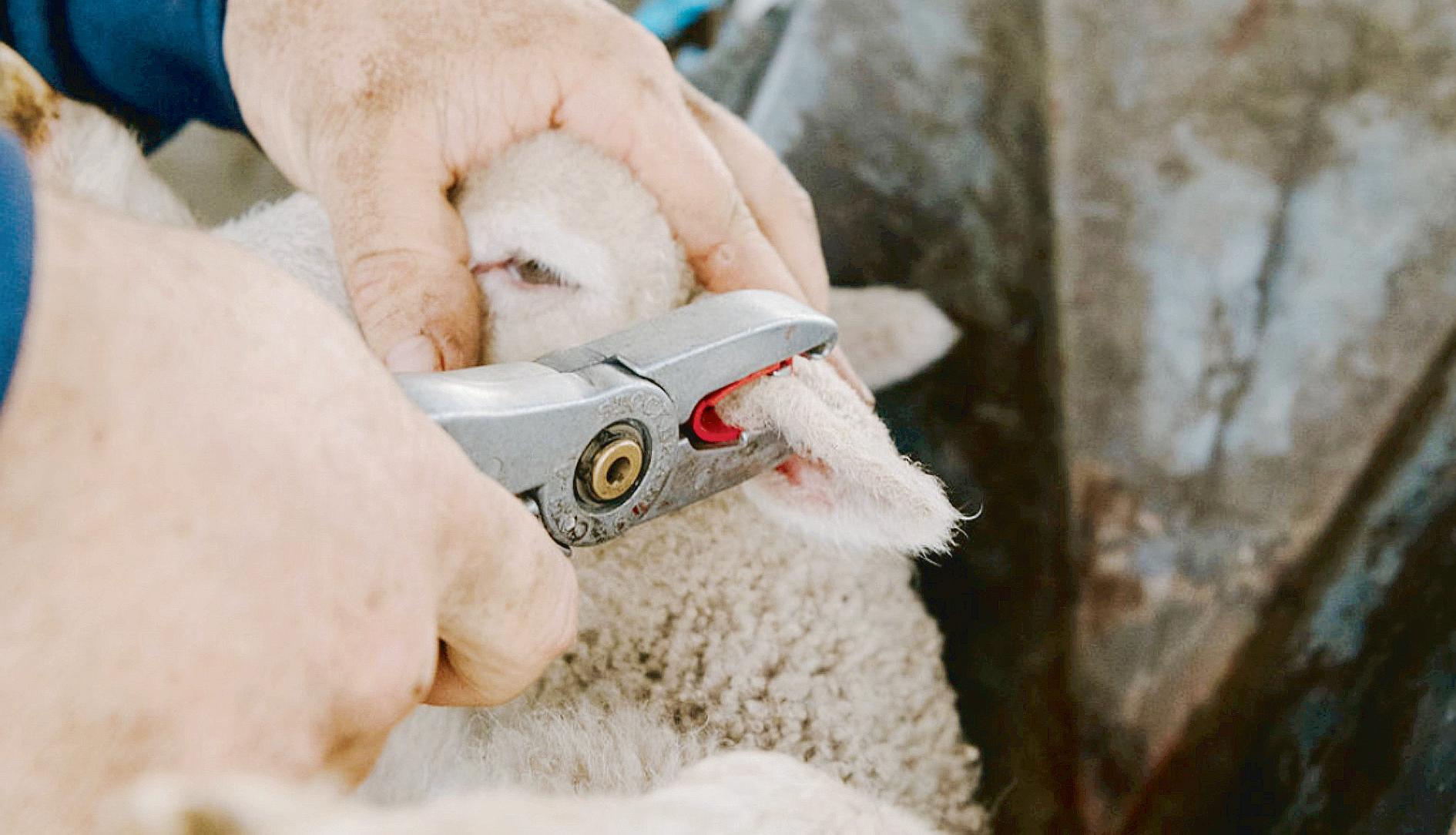




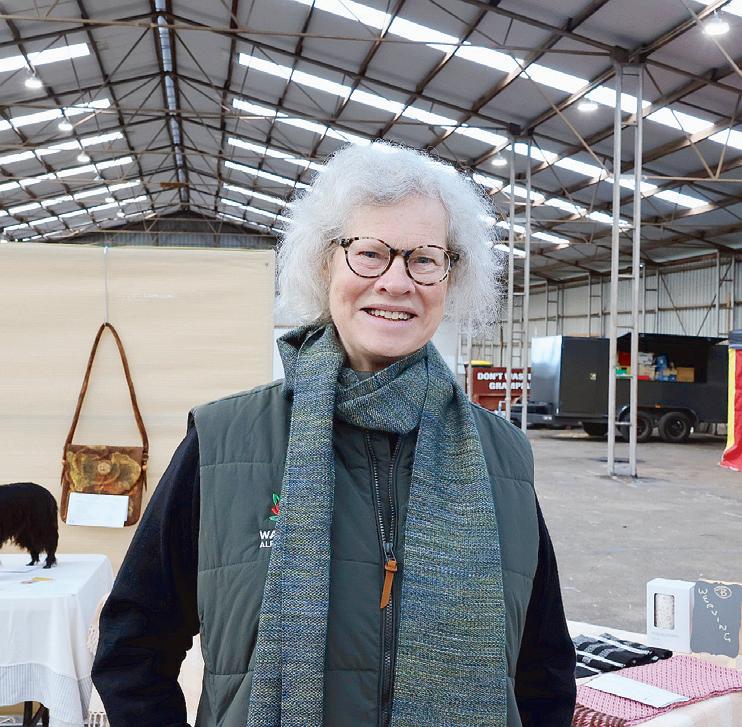
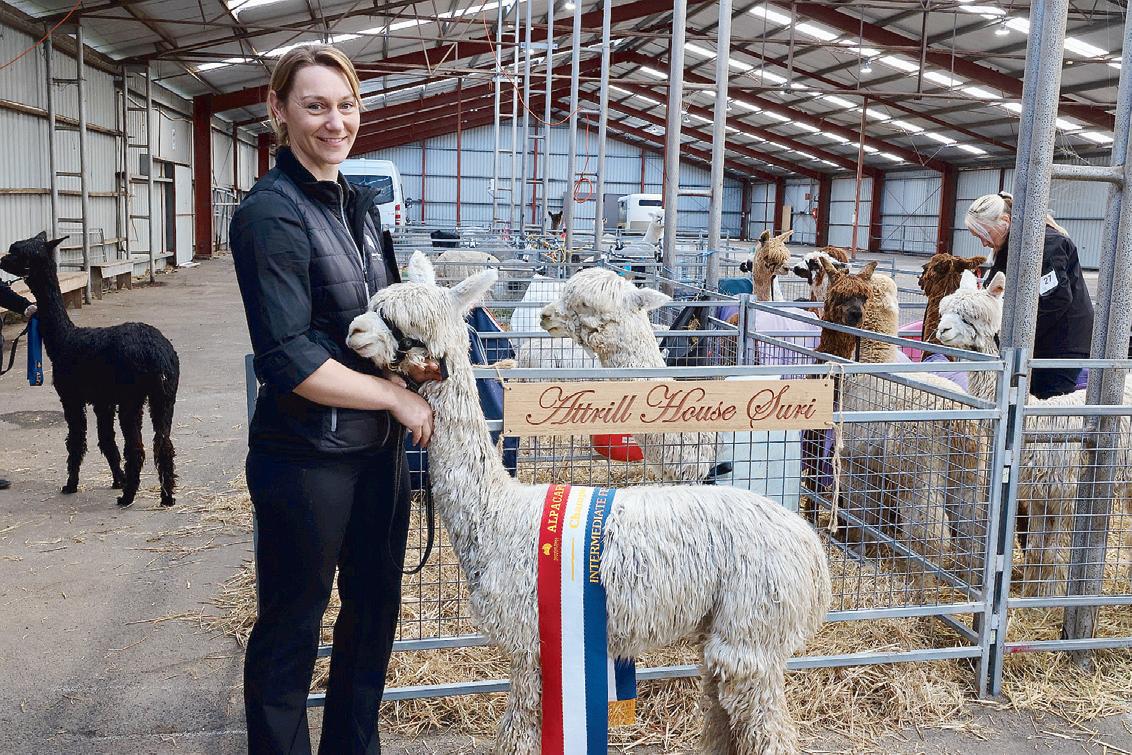
HAMILTON’S showgrounds buzzed with activity in July as Alpaca-Fest drew crowds, celebrating the charming alpaca and their contribution to the ag-economy. The event was a highlight for local and state alpaca breeders and enthusiasts.
Visitors from across Victoria and South Australia attended the event, eager to witness the highly anticipated alpaca judging.
Organisers expressed immense satisfaction with the turnout, attributing it to the growing popularity of alpacas and the festival’s reputation for family-friendly entertainment.



